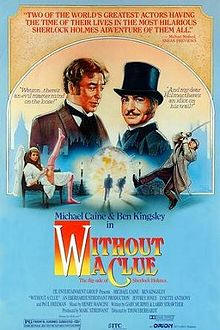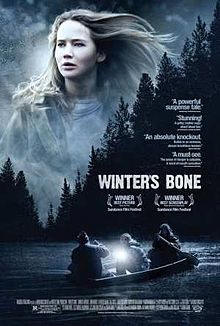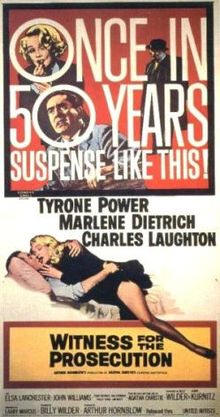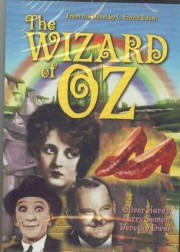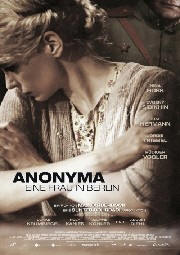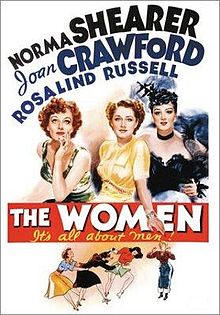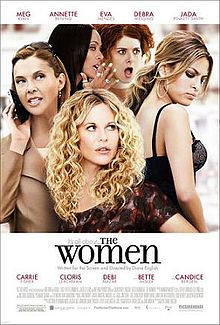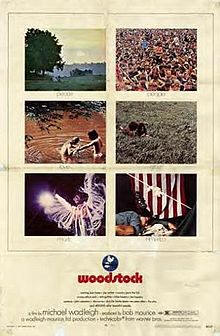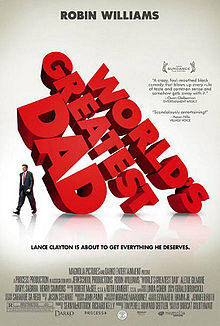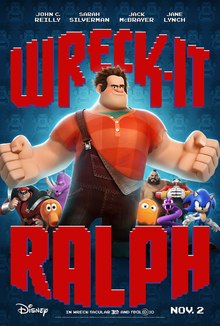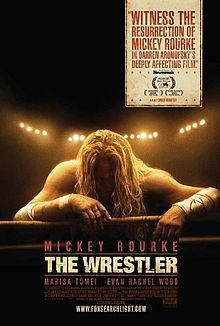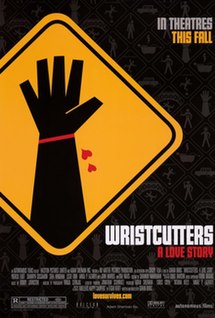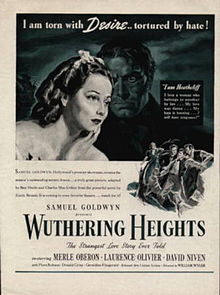|
Movies we've seen © 2004-2013 by John Varley; all rights reserved |
W
|
The Wages of Fear (Le Salaire de la peur) (France, 1953) Sorcerer (1977) We just saw the former film, me for the second time, Lee for the first. It's been some years since I saw the latter, but I've seen it at least three times, so I remember it well. It struck me that it might be useful to review them both, to compare and contrast. For convenience, I will refer to one as W and the other as S. William Friedkin's original intent when he remade the classic W was to keep the title. Changing it, and changing it to what he changed it to, was the stupidest decision he ever made (see my review of Les Diaboliques). And believe me, he got lucky, because he had tried to make some other bad ones. His first choice of star was Steve McQueen, who I loved in some parts, but would have been all wrong for this. (McQueen demanded a part be written in for Ali MacGraw, which would have been utter disaster; luckily, Friedkin realized this, too.) Then he went after Clint Eastwood and Jack Nicholson. Wrong, wrong, wrong, Bill! So he cast Roy Scheider, who was perfect ... and what did he have to say about that? Worst casting decision he ever made, he opined. Why? Because Scheider is only a "second or third banana, he's not a star." I guess the miracle is that this shithead ever made any good films ... which he has, but not since 1985's To Live and Die in L.A. (He recently made the perfectly awful The Hunted.) W: The weakest part of the film is the first half hour or so. It establishes the characters, but takes a lot of fairly boring screen time to do so. Vera Clouzot takes what would have been the Ali MacGraw part, and she's not really needed. Sorry, she's just the love interest, she's clichťd, she overacts. But I guess the great romantic Yves Montand needs somebody to adore his chest beneath his torn shirt, and the kerchief he keeps tied around his neck, and the stub of cigarette in the corner of his mouth (so French, so tres French!) that keeps him squinting most of the time, like Belmondo in Breathless. I'm not complaining; this it all great stuff. S: Friedkin realized this movie didn't need a female any more than The Great Escape did. It's a pure action film, and while I love to see women in action films, there are times when you realize they were simply shoehorned in, and this is one of them. Friedkin also realized it made more sense to show these desperate men before they arrived in this asshole of the known planet, who they were before, what they did to get themselves there. So he gives us four vignettes at the beginning. Originally, they were meant to be interspersed through the story as flashbacks, but I think this works better. Friedkin does a better job of portraying just how low, just how desperate these men have become. I myself would have leaped at the chance to drive a truck full of leaky dynamite (S) or nitroglycerin (W) to escape this place. What's the worst that could happen? You get blown sky-high. Big deal, you'd never know it. It turns out that the journey is much worse, of course, to the point that I might have hit a pothole just to get the suffering over. Once the trucks get moving, the movies are about equal in building unbearable suspense for a while. (Though S outdoes W in the process of making these trucks seem actual living beings, menacing and terrible, one of them being named Sorcerer ... though we see the name in only one shot. Some time is spent preparing the trucks, adapting them, making sure everything works. They are ugly, and superb.) Each movie has a vertigo-inducing scene with the road collapsing beneath the tires. In W the road is blocked by a rock. In S, it's a huge fallen tree. In both, the man who knows about explosives uses some of the nitro they're carrying to blow up the obstacle. I'd call these sequences a draw, in cinematic terms. Both are very, very tense. Then S considerably raises the bar with one of the most spine-tingling suspense scenes I've ever witnessed: the famous crossing of the rotten wood-and-rope suspension bridge over a raging river in a howling storm. The good old IMDb informs me that the bridge cost a million dollars to build in the Dominican Republic ... and then the river beneath it dried up, and the whole thing had to be moved to Mexico, at a cost of another million. And then that river started to dry up ... Helicopters provided the wind, and huge rain machines provided the water. The bridge was a marvel of engineering with many safety devices, but trucks fell in the water five times. It took three months to film. It sounds as grueling as Fitzcarraldo, maybe even more. S gets a bit over the top near the end, with hallucinations and stuff that I didn't think fit in that well. W wins that part of the contest. But in the very end, W goes for ironic, foolish tragedy, where S's tragic ending grows honestly from the story. One area where S wins hands down is in the music, by Tangerine Dream. It is relentless and pulse-pounding, and enhances every scene where it is used. All in all, I can't think of an instance where a re-make has held its own so well. In my capacity of all-knowing God of the Cinema, I'm going to call it a draw. But I do know that, if I decide to see one of them again, it will be Sorcerer. IMDb.com The Wagons Roll at Night (1941) I donít know how they did it, but I wish more moviemakers today could do it. Studios in the old days could take a story that was entirely and utterly predictable and make it fun. Maybe itís a nostalgia thing. Maybe in 70 years the by-the-numbers romances theyíre making today that just look so awkward and predictable will look fresh and fun to the people of that time. Who knows? Humphrey Bogart runs a small traveling carnival. One of the attractions is a lion tamer (the great Sig Ruman) who is a terrible drunk. One of the lions escapes and a small-town grocer (Eddie Albert) manages to subdue it. Bogey is impressed, and the kid, who has stars in his eyes (and is as gee-whiz pure and clueless and stupid as the part requires) is persuaded to join the carny as an apprentice lion tamer. Because audiences of that time had no idea how lions are tamed and trained, they bought into the idea that it was all horribly dangerous (itís only moderately dangerous, though I admit I wouldnít want to do it) and consisted of nothing but sheer willpower and the ability to crack a whip, which it doesnít. (Lions in shows like that are all pussycats, and have to be trained to roar and look menacing. Theyíre just waiting for their meal.) Anyway, he turns out to be good at it, and the old sot is fired. Bogey is obsessive about his little sister, who he is determined will never come into contact with the sleazy world of the carny. You will not be surprised to learn that Eddie falls in love with the sister, nor will it be any surprise that Bogey comes up with a scheme to kill Eddie, and that it involves lions. In fact, no part of this movie is in the least unpredictable. So why did I enjoy it so much? Bogeyís star power, I guess, plus lovely carnival montages like no one does anymore, and good work from all the supporting players, including Sylvia Sidney. It is definitely minor Bogart, and it may not be your cup of tea, but I liked it. IMDb.com Waiting For Guffman (1996) One of Chris Guestís little gems, this time about amateur theatrics in a small town. He manages to tread the careful line, sometimes lampooning their pretensions and still managing to make us like them. IMDb.com Waitress (2007) I guess everyone knows the sad story of this little film by now. The writer-director, Adrienne Shelley, was brutally murdered by a piece of human garbage, Diego Pillco, when she complained he was making too much noise in an adjoining apartment. Diegoís explanation? He was having ďa bad day.Ē May he never have another good one. As of now heís awaiting trial, and should never be a free man again, but you never know about New York juries. Los Angeles juries let celebrities walk, but in New York itís the poor folks who itís hard to convict. The murder happened just days before she would have learned that her little labor of love had been accepted at Sundance. I wanted to put all that out of my mind and simply view it as a movie, but itís impossible. I didnít want to give Shelley any sympathy points as an artist Ö and I donít think I did. My verdict: She would have had a bright future as a writer-director-actress. Another Kubrick or Scorsese? Probably not, but you never know. She should have had plenty of time to develop. She had two full-length directing credits before this one, and I havenít seen either of them. What she showed me here in her writing was a great imagination, a great feel for character. There is a business with the making of pies that is just delightful. As a director, she knew how to place the camera, knew how to edit for best effect, and had a wonderful sense of composition and color. It reminded me, a little, of another waitress, Amťlie Poulain, though of course she didnít have the budget Jean-Pierre Jeunet was working with. In short, this is a delightful little film. It has a few rough edges, but I enjoyed every minute of it. IMDb.com Waking Sleeping Beauty (2009) At the end of the Ď80s the Disney animation department was at a low ebb. Nobody had any new ideas, and the movies werenít making any money. There was serious talk of shutting it down completely. Only Roy Disney wanted to stick with animation. Then Frank Wells, Michael Eisner, and Jeffrey Katzenberg arrived, and within a few years they were making movies like The Little Mermaid, Who Framed Roger Rabbit, Beauty and the Beast, and The Lion King. A decade later, Wells died in a helicopter crash and Katzenberg was out because of personal conflicts with Eisner. This is the story of how it all came down, and itís a fascinating one. There are interviews and a ton of old home movies of the people at work and at play. If you are interested in Disney, as I am, you have to see this. IMDb.com Walk, Donít Run (1966) We had just seen The More the Merrier, and thought it would be fun to see this one, which is a remake, 23 years later. And it was! There is a housing shortage in wartime Washington/Tokyo during the Olympics. Charles Coburn/Cary Grant inveigles Jean Arthur/Samantha Eggar into subletting her apartment. Later, Coburn/Grant sublets his part to Joel McCrea/Jim Hutton. Hilarious romantic complications ensue, culminating in marriage. This is one of those rare times when a remake works very well. Which is the better film? Iíd have to say the earlier one has the edge, though thatís not to knock this one. Jim Hutton is not as interesting as Joel McCrea. Cary Grant plays it quite differently from Charles Coburn, and rightly so. Coburn was a jolly fat man, and Cary Grant was Ö well, Cary Grant. Samantha Eggar is no Jean Arthur Ö but she doesnít have anything to be ashamed of; nobody could equal Jean Arthur. There are nice bits of business in both movies. Both use a gag about vanishing pants that is very funny. Jim Hutton is an Olympic athlete, but every time someone asks him what his event is, he deftly changes the subject. Thatís because heís competing in the most silly-looking Olympic event there is, except maybe the triple jump: the 50K walk. Thereís just no way to look dignified or even athletic in that crazy gait walkers use, though youíd better be quite the athlete if you intend to do it for 50K! While making coffee or showering, Cary Grant whistles the themes from two of his previous movies, Charade and An Affair to Remember. And he is willing to spoof himself. Several references are made to how old he is. He looks in the mirror and worries about the hint of a turkey neck. (He was 61, and looks amazingly good, and in several sequences proves himself about 1000% more spry than I am today at the same age.) Heís done this sort of thing before, as in His Girl Friday, when he says at one point, ďThe last man that messed with me was Archie Leach ...Ē Archibald Leach was Cary Grantís real name. Sadly, this was Grantís last film. At least, I think itís sad. He felt he was too old for romantic leads, and decided to get out, unlike some present-day actors I could name who insist on playing opposite actresses 40 years younger than themselves. Still, there was Paul Newman, who worked right up to the end of his life. He didnít go into supporting roles so much as find roles more suited to an older man. Could Grant have done that? Iím not sure. Paul Newman was a great actor, and Cary Grant was Ö Cary Grant. He could play Cary Grant to perfection, but that was pretty much it. (He said of that, ďI've often been accused by critics of being myself on-screen. But being oneself is more difficult than you'd suppose.Ē He also said, ďEverybody wants to be Cary Grant. Even I want to be Cary Grant.Ē) To be sure, playing Cary Grant was enough, more than enough, but I wonder if he could have shifted to old man roles. Well, whatever. He didnít want to, and thatís that. There is one scene, early on, thatís a little hard to buy. Grant comes to Eggarís door, asking to rent the spare room. She says she would prefer a women. Now, does that sound real, ladies? Ask yourself, if Cary Grant was standing in your doorway, would you slam the door? I think not. The only woman I can think of who wouldnít be interested is a lesbian Ö and I think even some lesbians would think it over. There never has been, and probably never will be, a male romantic lead like Cary Grant. There are few people who have ever lived who had the charisma of Cary Grant. I have a small personal experience of that charisma. When I was working at MGM we were having lunch in the commissary one day. There are two rooms in the commissary, a large one for technical people and extras, and a smaller one for executives and stars Ö and the occasional writer, like myself. I was with David Begelman, Freddie Fields, Doug Trumbull, and John Foreman, men who had worked around big stars all their lives. The tables around me were filled with similar people, producers and stars. Suddenly a buzz went around the room. Itís Cary Grant! Cary Grant is here! And all at once these powerful men, men impossible to impress, were as atwitter as the most starstruck fan standing outside the ropes at a big premiere. They didnít jostle or shout, of course, but you could feel it, as he entered the room and passed quickly through, smiling, shaking a few hands. The man hadnít made a film in twenty years, but he still had more star power than any dozen men on the lot. That was Cary Grant. There are two supporting roles worth mentioning. Miiko Taka plays Samantha Eggarís best friend, Aiko. She speaks very good English, probably because she was born in Seattle. She starred in Sayonara as Marlon Brandoís romantic interest. And watch for George Takei as a cop in the police station. IMDb.com Walk Hard: The Dewey Cox Story (2007) First feature At the Drive In with American Gangster. IMDb.com Walk on Water (Israel/Sweden, 2004) Itís always nice to discover a movie youíve heard absolutely nothing about, and find that itís really quite good. I canít call it a sleeper, since no one in the US saw it, but I guess ďburied treasureĒ works pretty well. Itís mostly in English, though there is a fair amount of Hebrew and German, too. We open here with a really nice cover of Buffalo Springfieldís ďFor What Itís Worth,Ē which predisposed me to like the film. Later, we hear the original recording. Eyal (Lior Ashkenazi) is an assassin for the Mossad. We see him taking down a terrorist mastermind in Istanbul. Then he returns home to find his wife has committed suicide. His boss wants him to look into a report about an old fucking Nazi who has possibly been hiding in South America. He would be pushing 90 now. Eyal thinks this is bullshit, as many Israelis of his generation do. Why not just let it all go? Theyíre almost all dead, right? But the boss had a personal bone to pick, as this man supervised the genocide of almost all Jews in his part of Germany, which is also Eyalís. His assignment is to spy on the old manís grandchildren. Axel (Knut Berger) is in Israel to visit his sister Pia (Caroline Peters), who has renounced her German heritage to the extent of living on a kibbutz. He poses as a paid guide, and drives them around to see the sights. He also bugs her apartment. In the course of this he involuntarily forms a strong bond with Axel, and is interested in Pia. It comes out that granddad is in fact alive, something Axel didnít know about but Pia did. It is why she left Germany. She has not quite been able to turn her parents in for abetting him, though itís clear she would like to. Gramps has been smuggled back into Germany for Popís 70th birthday party. Heís in a wheelchair, breathing with oxygen, a total wreck. But still a fucking Nazi, as are their rich parents and all their friends. Eyal gets an order to kill the old fuck. Thatís all that can be told. Eyal is the last to realize that Axel is gay. He is at first repulsed, but is able to overcome it, awkwardly at first, then more easily. He genuinely likes the guy, and it is returned, though not in a sexual way for either of them. A gay man posting on the IMDb claims that the ending was tacked on so it would sell in the US. He feels the logical ending would be for Eyal to fall in love with Axel. I donít agree, I donít think oneís sexual orientation changes like that, but I do agree the ending seems tacked on Ö but I couldnít help liking it, since Iím partial to both heterosexual love stories and happy endings. The writing, the acting, and the moral dilemmas are all very well done. It was interesting to see a bit of a real kibbutz, which in my mind has always conjured images of Boy Scout camp or the 4H Club mixed with migrant labor. You know, log cabins and tents and slopping the hogs and backbreaking labor in the fields. There was some of that back in 1940, but these places have been around many decades now. This one looked like a really nice junior college campus, with apartment blocks and a huge communal cafeteria. Side note: Caroline Peters revealed in an interview that her own grandfather was a Nazi, just like the character she plays. This has always struck me as a terrible burden for a moral Germanóand most of them are, just like any other nationality. To know that your parents, or these days your grandparents, acted like monsters Ö how awful. How many generations before the guilt is expunged? Another one, at least. SPOILER WARNING: Ah, hell, I just canít pass up the opportunity to comment on the end. Eyal goes to the mansion where the old fucking Nazi is hidden, ready to lethally inject him. By now Axel has discovered that Eyal is Mossad, and he watches from the background as Ö Axel canít do it. His wifeís suicide note told him that everything he touched died. He is through with killing. He leaves Ö and Axel goes to the old man and turns off his oxygen. He dies almost immediately. And good for you, Axel! If it were me, I would have added one final touch. Iíd have packed and called a taxi and, as I left, I would have told Moms and Pops that I killed the genocidal old fuck. And what are you going to fucking do about it, oh parents of mine? Hah! Not a damn thing you can do, without putting yourselves in jail. IMDb.com Walk the Line (2005) This was pretty much what I expected it to be. A biopic, and even more a biopic about a contemporary musician, always seems to have the same story line. Comes from nowhere, early struggles, success, bigger success, crisis and downfall (usually from booze and/or drugs), triumphant return. There are exceptions, like The Doors, but if they ever do Jimi or Janis, that one will begin to seem like a clichť, too. Like Sam Goldwyn said, "What we need are some new clichťs." That doesn't mean it's a bad film, far from it. It was bold to have the two leads do their own singing, but we're not talking Streisand or Pavarotti here. Country rock is not like that; plenty of people without notably talented voices have made it big, and rightly so. Johnny Cash's voice was deep and gravely and sometimes had only a nodding acquaintance with where the notes should be, but he made up for it in passion and songwriting ability. He started at a time when genres were not quite as stultifying as they have become, and so could be a rocker or a country boy, as he chose. He could spot talent, and knew Bob Dylan was a genius before a lot of other people did, and didn't care when he went electric. His cover of "It Ain't Me, Babe" is one of my favorites. Joaquin Phoenix doesn't particularly look like Johnny Cash, but he does something with his mouth when he sings that somehow makes him the spittin' image. And what can I say about Reese Witherspoon? I've been madly in love with her since her first role in The Man in the Moon (strictly platonic, of course; she was 14), and she just keeps getting better and better. She has done very well in stuff like The Importance of Being Earnest and Vanity Fair. I even liked her in movies I didn't like, such as the Legally Blonde ones. I haven't seen all the Oscar-nominated performances yet, but no matter how good the others were, her win certainly couldn't be a travesty, like Braveheart taking Best Picture. Oh, yeah, I have to add ... I was squirming at the end, when Johnny proposed to June live onstage, and I was hoping it was some screenwriter's invention. It wasn't. None of my business, of course, but that was a pretty tasteless thing to do, John. IMDb.com Walkabout (UK, 1971) I had heard this movie praised from the moment it was released, but somehow, I never got around to seeing it. Now, 42 years later, I find it was well worth the wait. I fell deeply in love with Australia during the couple of weeks I was able to visit as Guest of Honor at the Australian National SF Convention, in Perth, quite a while ago now. Partly it was the Aussies who were my hosts and showed me a wonderful time. And partly it was the outrageous island continent itself. You can only see so much in two weeks, and what I saw was mostly Sydney, a great city, and the land along the railroad across the continentósome of the most barren I had ever seenóand a bit driving around Western Australia. There is so much left to see. I yearn to go back. When an aboriginal boy reaches the age of 16, he ďgoes walkabout,Ē surviving on his own in the brutal outback, applying the lessons he has learned. In this story, two young white Aussies, a 14-year-old girl (Jenny Agutter) and her 5-year-old brother (Luc Roeg, son of the director, Nicholas), go walkabout, but not by choice. Their father takes them for a picnic far in the outback, and then Ö well, it happens ten minutes into the film, so I donít think a spoiler warning is needed Ö tries to kill them. This was a shock to me. I knew they were going to be stranded and alone, but had no idea why. Failing after taking several potshots at them, he sets their VW bug afire and then offs himself. The movie constantly defied my expectations like that. I expected a survival story, a sort of How to Survive in the Bush thing. Not really. The best advice it offers is to grow up an aboriginal and learn all this stuff at your fatherís knee. They set out, dressed in their neat school uniforms. They forgot to bring a canteen, or anything else very useful except a radio. They luck into finding a little pool of water under a tree, but when that dries up they would surely have been a pile of bleached bones in short order except for the arrival of an aboriginal boy who may himself be on his walkabout. None of that is explained, as are so many details here. We must puzzle it all out, just as the children do. He speaks no English. We never learn his name. (He is played by David Gulpilil, who went on to a memorable career in movies like The Last Wave, The Right Stuff, and Crocodile Dundee, and who is considered to be the best performer of aboriginal dance in Australia. I thought he looked familiar.) He takes them on, and keeps them alive as they walk through some of the most gorgeously photographed scenery Iíve ever beheld. That, and the most alive scenery. It looks like nothing could live in most of these places, but it is the domain of the reptiles. We keep discovering them, one Jurassic refugee dragon after another, as well as wombats, water buffalo, wallabies, marmosets. Kangaroos, of course. And birds. The glorious birds of Down Under. That was one of the most memorable things about Australia to me. The flocks of brightly colored birds that sell in American pet stores for thousands of dollars. Just out there, wild and free: parrots, cockatoos, budgies. Even in Perth I saw them, and outback? All over the place. Itís hard to fathom just how primitive the aboriginals were, as far as tools go. You canít even say Stone Age, really. The boy didnít use a stone for anything. The only tools he had were a clutch of long, sharp, pointy sticks, and a couple of sticks to rub together to make a fire. Cuisine consisted of killing just about anything (we see a lot of animals killed here; itís not for the queasy) and tossing it onto the fire. No grill, so spit, no hot rocks. They wander. The kid is 5, totally absorbed in the moment. If heís not actually dying of thirst, he couldnít be bothered by anything except his toys. The girl is feeling a sexual vibe from the boy. Near the end, he performs an odd dance, far into the night, that I came to believe was some sort of courting ritual (and the summary at Wiki agrees with me). She doesnít understand it, with tragic results. I kept waiting for the expected scenes. None of them ever came. Surely there would be a tearful reunion with the mother. Nope. Never happened. Surely there would be signs that someone was looking for them. Iím sure they were, at first, but we never see it. Well, then, when they finally show up in a town, theyíll get a big welcome, right? Not even that. This movie never once went where I expected it to go. Itís a truly great one. IMDb.com WALL●E (2008) What can I say? This is currently getting an astronomical 93% at Metacritic (lowest score: 70), 97% at Rotten Tomatoes. There are essentially no dissenting voices. And everything they say is true. Itís an awesome movie, and one that will make you feel good instead of just a bit exhausted. The story is simple enough. WALL●E is a trash compactor, still functioning at the task of cleaning up the Himalayas of trash that forced humans to abandon Earth for a giant space colony 800 or so years ago. He collects odd treasures, like an old videotape of Hello Dolly, which shows a lonely robot what it might be like to love, and to dance, with the musical numbers ďPut On Your Sunday ClothesĒ and ďIt Only Takes a Moment.Ē This part of the movie is essentially silent, though rich in sounds. No dialogue. A ship from the colony pays a visit, looking for life. If it finds life, the humans can come back. WALL●E falls in robotic love with the new, high-tech probe robot, EVE, and follows her back to the colony, where adventures ensue. Humans have devolved into amoebic blobs, the ultimate couch potatoes whose couches float from place to place, endlessly consuming, endlessly watching 3D screens that hover in front of them. This stuff is very funny. No more plot points are necessary here. See it and enjoy it for yourself. This movie is so dense with flabbergasting detail that I know Iíll want to see it many times, because youíll see more on each viewing. My review of Ratatouille turned out to be essentially a review of Pixar Studios, so I made sure to actually say something about this movie. But again, in my mind the big story is still Pixar. Has any studio, ever, had such a string of mega-hits, without a single stinker? Without even a single mediocre movie? (Maybe Walt Disney in his prime.) And not just hitsóbecause Iíve seen some ďhitsĒ that really stunk up the theater, that would appeal only to fanboys and troglodytes (as if there was a difference)óbut real stories that move and affect you, that are really worth your time. That they will be visually stunning is a given; any fool with a computer can now produce snazzy visuals, although Pixar is still the leader in CGI design. But so many of them are just sound and fury and no soul, just jokes and frenetic action. There is action aplenty in any Pixar film, but it all flows from the story. The story! John Lasseter has said that, over and over. Donít even start until you have nailed the story. And they have always done so. They have never produced a sequel simply because the first one made money; first you must have a story to justify it. (And Toy Story 2 was wonderful, and I have no doubt at all that Toy Story 3, scheduled for 2010, will also be wonderful.) A lot of critics have pointed out that WALL●E was quite a risk, in that the first half is a silent movie. (The creators studied the great silent comics, Charlie Chaplin and Buster Keaton, and it shows!) Would kids dig it? I donít know if the verdict is in on that, but to my mind, it would take a really stupid kid not to love it. Ö on the other hand, we are raising a lot of kids with 2-second attention spans, who arenít happy unless something blows up every three seconds. Weíll see. What Iím really waiting to see is the next Pixar film, due next summer, which sounds like a really risky one. Itís called Up, and concerns the adventures of a 78-year-old man and an 8-year-old boy. Will kids watch a movie about an old fart? I know I will. Oh, by the way, after WALL●E, all the new Pixar films will be in 3D! I can hardly wait! IMDb.com Wallace & Gromit in The Curse of the Were-Rabbit (2005) Iíd heard about Wallace and Gromit for a long time, but never seen one of their shorts. This is the first feature-length, and there will probably be more, given the stellar reviews for this one. I admire the devotion of these people who have stayed with stop-motion in an age of CGI, but I canít say I understand it. The process takes a degree of patience that is almost incomprehensible to me. And they did cheat quite a few CGI effects in, but why not? I donít know how youíd do fog in stop-motion. Wallace is a goofy but nice inventor. He has a million gadgets, many of which work as advertised. When they go wrong, the disaster usually seems to be sorted out by Gromit, his sidekick dog, who doesnít speak, and is a lot smarter. The humor is fairly broad, with a sly zinger tossed in now and then. I quite enjoyed this, but canít think of a lot more to say about it. IMDb.com Walt: The Man Behind the Myth (2001) This documentary delivers. That is, it tells me some things I didnít know. Unless youíve read a biography of Walt Disney, it will probably do the same for you. I didnít know that Walt and Royís father was killed by a gas leak in a house the sons had bought for their parents. That must have been devastating. I didnít know his second daughter was adopted. There are a lot of nuggets like that, and I suspect that Walt and his familyís life was photographically documented better than just about anyone of his generation. There was always a movie camera around. We see a lot of this footage, and Walt is a touchy-huggy sort of guy, always smooching his wife. You donít expect a lot of controversy in a film produced by WED Enterprises, and there isnít, but nothing seems to have been omitted. The fact is, the family was a solid one, there has never been a whiff of anything nasty about any of them that Iíve ever heard of. Everybody (and just about all the living people who worked with him are interviewed here) seems to agree that he was an ordinary, decent man, nothing special Ö until suddenly that spark of genius would just knock you over. He was a hard taskmaster at work, and I got no problem with that. I look at the results. Time and again he took some idea that everyone else thought was cock-eyed, impractical, and sure to lose a ton of money, and turned it into a gold mine. I really wish he could have lived to finish EPCOT, which was going to be an actual planned town where people lived and worked, and is dazzling in its conception. If it were built today, it would still be decades ahead of its time. The EPCOT that was built is nice (so they say; Iíve never been there) but is really just a permanent worldís fair. I particularly enjoyed one segment with Chuck Jones, probably the best cartoon animator who ever lived. He worked at Disney for a short time, and when Walt asked him why he was quitting, he said ďThereís only one job here thatís worth having, and thatís yours.Ē Walt thought about it, and said ďYouíre right. And the position is filled.Ē IMDb.com Waltz With Bashir (Vals Im Bashir) (2008) Hereís a movie that was one of the major upsets of the 2009 Oscar ceremonies. It was considered a shoo-in to win for Best Foreign Film, but it lost out to a Japanese entry. I wonder why? Possibly the stodgy old Academy members just couldnít get behind an animated movie as Best Foreign Film. Or possibly, since it is an Israeli film that doesnít depict Israel in a good light, the large number of Jews in the Academy didnít go for it. Which would be odd, as it has been generally lauded in Israel; most of the criticism it got objected that it went too easy on the Israeli Army and its leaders who, during the war in Lebanon and the massacres at the Sabra and Shatila refugee camps, looked the other way as ďChristianĒ Phalangists slaughtered whole families, mostly women and children. It wasnít on the ballot for Best Animated Feature, and what would have been the point, anyway? WALL-E had a lock on that. I havenít seen the Japanese film that won, but Iíll tell you something: Waltz With Bashir was not only the best Foreign film of the year, I think it may very well be the best film of 2008, period. Better than Slumdog Millionaire, better than WALL-E, both films I loved madly. I say this not because I believe it is a perfect movieóit is sometimes a little slow, and I agree with some critics that it may not have brought its central message home as powerfully as it might have, nor with the focus it should have had. But these are very minor carps. What this movie does is so rare it is almost beyond price: It shows you something youíve never seen before. An animated movie about war? (Letís banish that word ďcartoonĒ completely for this movie.) Youíve got to be kidding. And itís basically a documentary, as well, another genre that wouldnít seem to agree well with the animatorís pen. But the animation format allows the director to do things he could not have done with live action Ö or at least could not have afforded, even with a much larger budget than he had. This film is ravishingly beautiful, even as it is horrific. The colors are amazing. He often uses only one or two colors in a scene, and the effect is electrifying. What happens, briefly: The director, Ari Folman, was a young man in the Army during the First Lebanon War. He knows he was near the massacre at the Palestinian camps, but he canít recall what he did. He sets out on a voyage of discovery, visiting old friends he hasnít seen in years, finding out what they remember. (These are all real people, who were filmed as they testified, and then drawn in a graphic novel style. No rotoscoping in this movie! the head animator emphasizes.) Then their experiences are shown, in both realistic and dream-like fashion. How much is true? How much is memory to be relied on? This incident was the first time the Israeli Army was seen by even the Western powers as something less than admirable, and Israelis are ashamed of it. It was condemned as genocide by the United Nations. (Which, to me, it clearly was not. Massacre, yes. Atrocity, yes. Genocide, no. And what do we make of the fact that the Christian Phalangists, who did the actual killing, were never accused of genocide, nor even condemned very harshly?) Thatís all I really care to say about all that. I prefer to see the movie as an exquisite work of art, like nothing Iíve ever seen before. A warning: Some scenes are hard to watch, but it would be wrong of you to look away from them. ďNever AgainĒ is a saying that applies to more than just the Holocaust. IMDb.com Wanted (2008) Second feature At the Drive In with Hellboy II: The Golden Army. IMDb.com The War (2007) Each of the seven episodes of this Ken Burns documentary begins with these words: The Second World War was fought in thousands of places, too many for any one accounting. This is the story of four American towns and how their citizens experienced that war. How are you going to tackle something with the scope and breadth, sacrifices and bravery and sheer horror of World War Two? It dwarfs Burnsí other great topic, the Civil War. Fifty million people died, the great majority of them civilians. All the major countries of the world were involved, except those in South America. Fighting ranged from the Aleutians to New Zealand, from Pearl Harbor to Stalingrad, from Norway to Burma. How do you deal with that? One way is to try to tell the whole political, strategic, and tactical story Ö but itís been done, many times. Time-Life brought out a terrific, massively illustrated 39-volume series of books. The BBCís brilliant 26-hour ďThe World at War,Ē narrated by Laurence Olivier, covered just about everything there was to cover, brilliantly, and unlike most American projects, moved American participation off to the side, where it belonged, and told me much I hadnít known about Britainís war, and most of all, the Soviet war. I am no historian, but I am a history buff, and I know quite a lot about WWII. I expected no surprises concerning the major events, and I got none. I knew that when a unit was sent from Italy to the Ardennes Forest for a little rest and relaxation, they found anything but R&R. I knew that when the marines landed at Okinawa and met no resistance, they were wrong to think this one was going to be easier than Iwo Jima and Tarawa. I knew that when the cruiser Indianapolis was sent to San Francisco in the early summer of 1945 for refitting (and to take on the Little Boy atomic bomb for delivery to Tinian, something few of them knew), that the war was not over for these poor sailors, who soon would find themselves sunk, and swimming with sharks for five days. What Ken Burns has done here is to make the war deeply personal. And, without apology, almost strictly American. He wants to show us what it was like to be an American at that time. It is fitting that he should do so. Let a Brit make such a series about the British experience, and a Russian about the ghastly Eastern Front. Let a German make such series about what it was like for the average German, and ditto a Japanese. (I had to stop myself from writing ďJap,Ē as all the papers did in those days. I am still steamed at what those murdering fucks did, and how little their leaders suffered for it.) Iíd watch any of those series eagerly. This series concentrates on four American towns: Sacramento, California; Mobile, Alabama; Waterbury, Connecticut; and Lake Wobegon, Minnesota. (Well, actually, Luverne, Minnesota, but it might as well be Lake Wobegon.) West, South, East, and Heartland. It concentrates on a few dozen men and women who are amazingly articulate about their experiences. Men from all four towns died at Okinawa, and on Omaha Beach. The soldiers speak frankly, some for the very first time, about how totally terrified they were, all the time. This is no John Wayne propaganda machine. As usual in a Ken Burns project, it is stunningly beautiful to look at. Even the scenes of combat take on a stark beauty. Only the images of the deadóand there are many, and they are quite gruesomeófail to enchant, which is as it should be. Burns has chosen carefully from the millions of images available, and has mostly avoided the stock shots that any history buff has seen a thousand times. He has unearthed a lot of stuff that may not have been seen since 1945, including a really amazing amount of color film that looks very, very good, considering its age. Most WWII films are almost totally black and white; I had no idea there were so many combat photographers shooting Kodachrome back then. And by the way, kudos to the combat photographer, who put his life on the line as sure as did the combat soldier, so the folks at home could understand, in some small way, just what their boys were going through. Some critics complained that little or nothing was said about things like the war in Burma, the resistance in France and Holland, the Battle of Britain, and most of all, the epic suffering and determination of the Russian people. I had no problem with it. The idea here was not to tell the story of the whole warówhich is impossibleóbut of some of the people who fought in it. Some of their stories will move you to tears. Some of them will probably move you to rage. Listen to the man who walked into one of the death camps, or the 12-year-old girl from Sacramento who was interned by barbarous Japanese in Manila. If you donít weep, thereís something wrong with you. The bad is shown along with the good. ďColoredĒ troops were sometimes attacked by their fellow soldiers. Black shipyard workers in Mobile and other ďAmericanĒ towns were set upon by white workers, beaten, even lynched. Returning black soldiers who fought for their country were once more herded to the back of the bus by sub-humans who stayed at home. American citizens were thrown into concentration camps by none other than Franklin D. Roosevelt Ö and then drafted to fight in Europe. And these nisei Japanese were eager to fight, to prove themselves. I must say, I wouldnít have been that patriotic. If my government had thrown my family into concentration camps and then asked me to fight, Iíd have told them to go take a flying fuck, served my prison term, and then devoted my life to the destruction of America in any way I could. Sorry, thatís just how I feel. Maybe that makes those nisei better people than me; I donít know. My hat is off to them. But I do know that the 442nd Regimental Combat Team, all nisei, was the most decorated outfit in the history of the US Army for two reasons: One, they were incredibly brave and had something to prove; and, two, their commanding general hated Japs, and threw them into the worst situations he could find. For which he is currently burning in Hell, right alongside Tojo and Hirohito and Hitler. The 442nd was the most decorated outfit in spite of the fact that people like Daniel Inouye were given the Distinguished Service Cross for deeds that would have earned white Audie Murphy five Medals of Honor. (President Clinton acknowledged that by upgrading his medal 55 years later. Good on ya, Bill.) A few years ago it was my privilege to shake the hand of a veteran of the 442nd, at their war memorial in the remains of Little Tokyo. I thanked him for his service. It was the least I could do. I get a weird sense of dťjŗ vu when watching things about The War. I feel a part of it, somehow, though I wasnít born until two years after it was over. I know the stories, I know the music, I know the photographs, though Iím not in them. I think itís a kinship I feel, and sort of a longing. Iím not foolish enough to wish that Iíd been there so I could fight, but donít you sometimes wish you could be part of something so large, so determined, so dedicated? I suppose there are places to find such causes, but I have been unable to identify with any of them. With The War, you had no choice. There it was, impossible to ignore; now, what are you going to about it? Tom Brokaw called them ďThe Greatest Generation,Ē and I have no problem with that. What they did was, they stood up, they did what had to be done, terrible as it was. It marked them all. They are dying now at the rate of 1000 per day, and pretty much all of them remember The War in good and bad ways as the most significant event of their lives. My generation Ö did we stand up? Well, some of us stood up against our own war, which we saw (and I still see) as a gigantic mistake, not something that had to be fought. But it was a puny thing compared to what our parents were asked to do, and did. As for later generations Ö they have never had to face a challenge of any kind. Nothing. Would they stand up? I donít know. I donít anticipate that there will ever be another war like World War Two. The world has been lousy with wars since then, but they have all been confined (from our point of view) to some foreign shithole. Our soldiers have done what was asked of them, bravely (and in most cases, I believe, in sheer futility), but they are a tiny fraction of us. We on the home front have had to sacrifice absolutely nothing since 1945. We wonít be asked to sacrifice anything if another world war comes along, either. We wonít have any choice. It will be over in hours, and the world will be nothing like it was before. There will be no home to return to. Other than that, we seem doomed to fight these smaller conflicts. Do you realize that the war in Afghanistan has already gone on twice as long as American participation in World War Two? And there is no end in sight. My grandparents went to war to end war. Didnít work. My parents went to war to stop a great evil, and, I think, also with the thought that they could end war. Didnít work. Within five years we were at war again. My generation intended to put an end to war. Didnít happen. Now we seem doomed to perpetual war, like in the book 1984. And in spite of smart bombs and other high-tech weapons, itís still as bloody awful as it ever was, and itís still the civilians on the battle fronts who suffer most. IMDb.com War Horse (2011) I canít resist quoting a line from a review in the Boston Globe: ďWar Horse is the best film of the year. The year, unfortunately, is 1942.Ē First, let me assure you that I am a sentimental fool. I often cry at sad movies; hell, I can cry at happy movies. But I really resent being asked to cry every ten minutes during a 2Ĺ hour movie, and be reminded of it over and over by swelling John Williams music cues. Spielberg is totally out of control here, every hyper-sentimental, super-manipulative, nakedly heartstring-stomping thing I hate about his films (and I love a great many of them) amped up to laughable extremes. I have literally never seen a film this soaked in schmaltz, not even in 1942. Love at first sight Öfour times! Tearful separations. Kidnapping, forced bondage, slavery, peril in battle, heroic plowing of the bottom forty Ö whatís that you say? How does plowing fit in? Why, didnít you know this was about a horse? An apparently supernatural horse, no less, able to do things no horse can really do, such as understand English instructions and carry them out on the first try, and bond so tightly with another (male) horse that he rides to his rescue multiple times. Itís really awful, the silly depths we sink to here. Joey the half-thoroughbred makes his appearance in the auction ring, where a silly old man pays an outrageous price for him just to spite his landlord, then takes him home where his wife points out he has just doomed the family farm with his booze-swilling, spendthrift gesture. Are we supposed to be on the side of the drunken dreamer? I wasnít. I wanted to kick the old geezer into next month, when the rent is due. Naturally, the farmerís silly son falls in love with the horse. For a farmboy to get that attached to a farm animal is not wise, to say the least, so heís following in his dumb fatherís footsteps. Then the horse is shipped off to war. Everyone who encounters this horse, loves this horse. He changes hands half a dozen times, and all the owners love him. They are willing to go AWOL and disobey orders. His last guardian is a German artilleryman who practically breaks down in great Teutonic sobs when the horse is mistreated. This, while hundreds of thousands of his fellow soldiers are dying horrible deaths. At last heís brought back to the British lines, and guess whoís there? Of course itís the farmboy. And a doctor is brought out of the hospital bulging with gas victims Ö to treat the fucking horse! Itís a horse, goddam it! Shoot the fucking horse and get back there with your patients! I could go on and on with chapter and verse about this great big horse turd, but Iíve wasted too much time already. This was originally a childrenís book, so maybe Iím being a little too harsh Ö but only a little. It then became a stage production, and I would dearly love to see that. It used life-sized horse puppets that have to be seen to be believed, absolutely lifelike in every movement. Thatís a bit of stage magic that can work Ö on the stage. This was a misbegotten project, never should have been made. IMDb.com War of the Worlds (2005) First, the plot doesnít make a lot of sense ... but when did it ever? I mean, going back to the original story? Alien creatures invade, whip the pants off us, and then die from our teeny little germs. This element remained in the radio play, in the first movie, and in this remake. This one attempts to inject a little ďlogicĒ into it, showing the alien machines sucking our blood, using our bodies as fertilizer to grow some icky stuff ... I wasnít very clear, but it was nasty, as youíd expect from bad aliens. It wasnít really needed, except to inject a bit more gore. Also, instead of coming from Mars (done recently, and badly, in Mars Attacks!), these invaders come from some undefined place, which is okay, but seem to have buried their death machines millions of years ago. So ... why now? Better to just show up, that way all we need to know about them is they like to kill and destroy. But having said that ... I liked this a lot. Watching it, I became aware of how goddam sick and tired I am getting of action pictures that defy the laws of physics, and of action heroes whose bodies defy the dictates of physiology. The Kung-Fu epic where people fly. The guy who outruns an explosion thatís following him at 1000 miles per hour. The action hero who absorbs blows that would decapitate an elephant. The falling man who reaches out and grabs a rope, never mind that heís moving at 80 miles per hour and it would pull his fingers right off. The car that flies, the plane that performs stunts that would tear off the wings. Neither Tom Cruise nor anyone else in this movie performs gravity-defying stunts. (He has an amazing amount of sheer luck, but thatís different. Somebody survives a holocaust like this, and naturally it is the man whose story we choose to follow.) He spends all of the movie running and hiding and scared shitless, just like you and I would. At first he is stunned almost catatonic, and is close to sheer panic. He never leaps from a five-story building and survives, he never jumps a car 500 feet into the air. Every special effect we see is logical, given the powerful nature of the aliens, and as real as if it was actually filmed. There are awesome moments and tense moments. I want to say a word to Roger Ebert, who seems to like almost everything lately ... and then inexplicably gets into a hissy fit about something he really ought to like. He said he didnít believe the tripods, because a tripod is unstable. Hel-looo! Roger! Anybody home? A tripod is the only stable platform. Look at an easel. Just ask a photographer, or a Piersonís Puppeteer (a Larry Niven creation which these aliens resemble). A four-legged device will always have one short leg, and will instantly form ... a tripod! Itís a bipod that is unstable. If you donít prop it up on one side or the other (thus forming ... a tripod!) it will immediately fall over. These aliens were tripodal, and would naturally build machines in their own image. IMDb.com WarGames (1983) When I was working at MGM in the Ď80s they had this war room set on the lot. I wandered by one day when shooting had just wrapped, and they had begun to tear it down. It was my first experience in how shoddy movie sets are. They were clearing it out almost as fast as the trucks could arrive. This was a very high-tech set for its time, with all the consoles and especially the large rear-projection screens with the war animations. But you could have easily put your boot through any of those consoles, and when you walked on the plywood floors it sounded just like that: plywood. All those stepping sounds are dubbed in later by the Foley people. As for the movie Ö it is fairly dated. Almost 30 years is a geological age in the world of computers. The Giant Brain that threatens to destroy the world probably has about the capacity of the average wristwatch these days, and the synthesized voice is rather comic. My GPS is much more realistic today. But itís fun to see Matthew Broderick as a very young man (he was 21) Ö though, come to think of it, he could almost still play a high school student. I guess what was most interesting was the depiction of using a very primitive home computer in the days when the Internet was all text and very slow. And whatever happened to Ally Sheedy? She was a big star, since this movie sheís appeared in dozens of B-movies in small parts. IMDb.com Washington Heights (2002) A fairly average story of a man trying to break out of his origins in a predominately Dominican neighborhood in Manhattan. Heís a cartoonist, his dad owns a bodega thatís in debt. Dad get shot and paralyzed and the son must take over the business. I enjoyed it, itís well acted and photographed. For a first-time director, not a bad effort at all. IMDb.com Water (Canada/India, 2005) I hate fundamentalists of any religion, but Hinduism is particularly foul. There seems to be little of love in the Hindu pantheon, a collection of psychotics who would make a hyena queasy. One of the vilest traditions in the religion concerns widows, and even Muslim women fare better. You have three choices if your husband dies: Throw yourself on his funeral pyre, marry his younger brother (if he has one, if heís willing) or live out your life in poverty, because you are a part of him, now and forever, amen, and must keep yourself chaste and penniless (unless you sell your body, because thereís nothing else society allows you to do) until you join him in death. This movie is set in 1938, when Gandhi was trying to reform some of this insanity, and concerns an 8-year-old widow (thatís not a typo: eight years old) who is sent by her family to an ashram to live out the rest of her life with the other widows, who are unclean. (Why, I donít know, but donít bother me, kid, itís a tradition!) It is not a particularly insightful movie, and is rather slow, its whole purpose being to show this monstrosityóa good thing, for sureóbut with a love story that seems tacked on. The most interesting things happened off camera, in what passes in India for the real world. The sets were burned by Hindu fundamentalists. Were they actually supporting this tradition, which still goes on in some cultural backwaters and, for all I know, in the big cities, too, or did they just not like the fact that it made their stupid religion look bad? For whatever reason, the government was going to shut down production, which had to be moved to Sri Lanka. That sound you hear is Gandhi weeping. IMDb.com Water For Elephants (2011) I love circuses. I love trains. I love elephants. Hereís a movie about an elephant on a circus train. Whatís not to like? Well, the life on the train can be brutal if itís run by a psychopathic sadist (Christoph Waltz, once again very good.). I also like Reese Witherspoon. Robert Pattinson left me as unmoved as I was by his performances in the first two of those boring Twilight movies, the only ones Iíve seen or will see. Rosie the elephant was a better actor. The CGI work was very good, too. There is a scene with dozens of wild, dangerous animals running amok through crowds of people. You know it was digital, it would be too dangerous to film it with real animals, but it looks completely real. And you learn some circus lore. Did you know that, to circus people, all elephants are ďbulls,Ē even though they may (like Rosie) actually be cows? All in all, not a great movie but worth seeing. IMDb.com The Way Back (2010) Peter Weir doesnít make a lot of movies (his last one was the wonderful Master and Commander: The Far Side of the World in 2003), and when he does I pay attention. This one is based on the true story of an escape from a Russian gulag in the early days of The Great Patriotic War, a 4000-mile trek through Siberia, the Gobi Desert, and the Himalayas Ö that is almost certainly a fabrication. It was a popular book, and then was debunked. So I wonder why Weir wanted to make it? It is beautiful to look at (one of the production companies was the National Geographic), and about half an hour too long. The hardships are unimaginable; itís hard to believe anyone could actually do what they do here Ö and, of course, probably they didnít. I enjoyed it, but I canít recommend it. IMDb.com We Bought a Zoo (2011) In 2006 the Benjamin Mee family bought the Dartmoor Zoological Park in Devon, England for about a million pounds. When they had it back on its feet (or hooves, or paws), Mee wrote a memoir about it and sold the film rights. The producers decided to move the story to California, the first of a series of mistakes that turned what might have been a real delight into a pretty routine and forgettable story. Not that the move was crucial; it still could have worked in California. But they werenít through. Benís wife was part of the story (she has later died) and his children were 4 and 6. So why not change it so that Ben and the teenage son are grieving for his dead wife, and the kids are 6 and 14? Iíll tell you why, because it mucks up the magic with a standard and boring story of a pissed-off teen acting outóand pissed-off teens acting out are a very hard sell for me. And even Matt Damon canít really redeem this maudlin material. What I wanted to see was more joy. I mean, they bought a frickiní zoo! How much fun could that be for a 4- and a 6-year-old? I wanted to see more of the animals; here were get another tired story of an old tiger that Ben refuses to put down. Sheesh, you got a family who know nothing about animals trying to run a zoo? The opportunities for funny scenes are endless. Sure, that have to struggle to make it work, but thatís all the conflict we really need. How much better to have seen the family pulling together along with the faithful staff, and have the emotional triumph come from that, rather than the eventual (and inevitable) return of the asshole kid to the ranks of humanity? IMDb.com We Donít Live Here Anymore (2004) Two best friends are screwing each otherís wives. It was hard for me to figure which of these four people I disliked the most. I canít find anything good to say about any of them, nor the story. IMDb.com We Need to Talk About Kevin (UK/USA, 2011) To quote Roger Ebert (not about this film), I hated, hated, hated this movie. Tilda Swinton, John C. Reilly, how bad could it be? Well, the acting is fine, as I expected, but everything else about it rubbed me raw. Tilda is a rather awkward, nervous, tentative woman who bears a child who, right out of the womb, reveals himself to be the devilís seed. He never stops screaming when sheís tending him. When Pop has him, heís a little angel. He grows up into Malcolm McDowell, Vincent DíOnofrio, Jack Nicholson, and all those other Kubrick crazy men with that patented under-the-eyebrow sneer Ö and heís only six! He hasnít even gotten started yet! He deliberately poops in his pants, just to make mummy mad. He never speaks to her, but around dad heís a little cherub. He grows older, I dunno, fifteen or so. He hates his little sister, kills her guinea pig, ďaccidentallyĒ leaves drain cleaner out so she loses an eye. It is clear to anyone looking that the kid is a psychopath and should be put down like a mad dog. So guess what? He goes to school one day and kills a lot of people with a bow and arrow, then surrenders. Oh, before he went to school he kills his dad and little sister, too. First of all, I didnít believe this bullshit for a second. I know there are psychopathic children, evil children, if you will, but I donít believe a squalling infant can take an instant dislike to his mother. Ridiculous! So what do we have here? Is it a horror movie, where we just postulate this is literally the devilís child, or some such horseshit? It sure doesnít look like one. Or is it supposed to be an exploration of what it must be like to bear a mass murderer? That could have been a good film. People are splashing red paint all over her house and car. She is slapped by a total stranger who wishes she would rot in hell. Sheís shunned in the supermarket and all over town. (Obvious question: Why doesnít she just fucking move? Go someplace where no one knows you. Answer: I guess she needs to visit the monster in jail, poor fool that she is.) Really, though, what must it be like for the mothers of Klebold and Harris, or Jared Loughner, or Kip Kinkel (well, sheís dead, come to think of it, the suffering is over). A mass murderer came out of your womb. How do you deal with that? Iíve read some heartbreaking stories from families whose evil spawn went out and did unthinkable things. They are just as much victims as the dead and the families of the dead. Could have been a good movie there. As if it werenít bad enough, this film is so artsy-fartsy itís enough to make you puke. It opens at that crazy tomato festival in Spain, where everybody wades in tomatoes. We see Tilda body-surfing the crowd, sinking into a literal sea of bright red tomato paste. Red, red, red, red. Okay, we get it! Thereís blood in her nightmares. Then, everywhere we turn, itís more red. Paint on the house, flashing red lights, cans of tomato soup in the market. We are bludgeoned with red. And of course the story is told non-sequentially, hopping around with seldom a two-shot or anything at all shot straight. We see horrific distorted reflections, extreme close-ups or a single eye Ö no point in going on more. Youíve seen the like. Naturally they save the real horror for the last, and itís artsy-fartsy, too. Frankly, the only reason I stayed around until the end was that I needed to see exactly what this monster had done. I really shouldnít have bothered. Neither should you. This is a movie I didnít just dislike, I wanted to exorcise it. Lynne Ramsey, who directed this disaster, has only done two other feature films. One was Morvern Callar, which I hated even more than this one, didnít even finish it. Her other film is called Ratcatcher, which I will do my utmost to avoid forever. IMDb.com We Own the Night (2007) First feature at the drive-in with The Kingdom. IMDb.com The Weather Underground (2002) One of the most depressing documentaries Iíve ever seen. Did I ever think these people were worthy of following? Well, not actually, I was never a radical activist, but I believe I mostly enjoyed it when these wackos lashed out at the government ... and just about everything else in sight. The Weathermen hijacked the Students for a Democratic Society in 1970, and proceeded down a well-worn path Iíve since seen all too often in my life, toward frothing fanaticism. They never killed anybody but each other, partly because of the deadly explosion in the town house in New York that sobered them up just enough to realize they didnít really want to kill anybody, and partly from sheer dumb luck. And for smart people, they sure were dumb. We see the whole miserable history here, starting with the "Days of Rage" in Chicago, where they hoped for thousands of angry radicals and got about 150. They built a bonfire and smashed some windows. The government trembled. The funny thing is, it did tremble, and promptly set out to smash the Weathermen, with or without laws to back them up. They became the Weather Underground. They blew up things. In the late Ď70s most of them got tired of it and turned themselves in. And here we can see that they were not completely off the mark in their assessment of the government: for all the laws the WU broke, the government was able to prosecute very few charges against them, because just about all their evidence had been obtained illegally. Most of them walked. We see them then and now. Two of the women say they regret nothing, theyíd do it all again. Bernadine Dohrn doesnít say much at all one way or the other about the past. Brian Flanagan regrets a lot, he often goes to the site of the town house, ruminating on his mistakes. Mark Rudd, fiery good-looking absolutely self-assured Mark Rudd, is a ruin of a man, a teacher at a small community college who seems to realize that everything the WU did played perfectly into the hands of Nixonís thugs, and turned the American people against him and his causes to an extent that weíre still suffering from it. Poor Mark. Poor "revolution." Did they really think they could overturn the richest, most successful nation in history with a few sticks of dynamite? Yep. IMDb.com Wedding Crashers (2005) This one might as well have had Wait For The Video! written right into the trailers. I was skeptical going in, and it won me over within five minutes. Early on, wondering why I was smiling so much, I realized that it had jumped right in and got my feet thumping and my eyes delighted. The music is very good. These guys crash weddings, for the partying and free food and the sentimental babes ... but they also just flat out enjoy it. They have to, to fit in with no one asking embarrassing questions, but when they are tying balloon animals or dancing with grannies or little kids or just plain joining in the hilarity you can tell itís sincere. Sure, theyíre freeloading, and getting laid, but no one is being hurt, everybodyís having a ball. There is a wonderful, long montage of five different weddings of different ethnicities, and they fit right into all of them. Then it moves fairly smoothly into deeper stuff, their gradual realization that what they have really been seeking is family. That they canít carry on like this all the time. Itís punched home with a hilarious meeting with the guy who taught them everything they know (Will Ferrell, uncredited) ... who is still living with his mom and now crashes funerals. Of course, like almost all movies like this, it ends with an excruciating and unbelievable scene where everything works out okay and the bad guy gets whatís coming to him ... but itís a small price to pay for all the laughs I had. IMDb.com Welcome (France, 2009) If we can believe this movieóand I think we canóFrance is very harsh with illegal aliens. You can go to jail just for feeding or housing them. This is the story of Bilal, a 17-year-old Kurdish boy from Iraq. He has walked 4000 kilometers to get to Calais, in the hope of getting to England to be with his girlfriend in London, who is about to be married off to someone she doesnít love. When all else fails (and we see some very high-tech measures used to prevent human smuggling), he decides to swim the channel. Now, a lot of people have done that since the first one in 1875, including a quadruple amputee (!) in 2010. But this kid can barely dog paddle. He signs up for two swim lessons (all he can afford), and the swim teacher (Vincent Lindon), takes an interest in him. Itís quite a good story, well-written, and it did not go at all where I expected it to. I thought weíd be seeing one of those ďyou can do anything if you only try hard enoughĒ stories, but instead we got Ö well, I shouldnít tell. It will probably surprise you. IMDb.com Welcome to the Rileys (2010) One of those nice little small movies. James Gandolfini (who has been trying to shake off the image of Tony Soprano, and doing a pretty good job of it, I think) lost his daughter ten years ago, and his marriage is coming apart because his wife wonít leave the house. On a trip to New Orleans he befriends a young stripper. They set up housekeeping together in a bad neighborhood. When the wife (recent Oscar-winner Melissa Leo) hears of it she does something unexpected: she drives to the Big Easy to find him. When she gets there she does something even more unusual. She does not explode in rage, but tries to understand it all. Itís a very unconventional situation, and all the more precious for that. I recommend it. IMDb.com Werner Herzog Eats His Shoe (1980) One thing leads to another. We watched Fitzcarraldo, and then the documentary about the making of it, Burden of Dreams, and this little 20-minute documentary was thrown in for free on the DVD. As a way of motivating Errol Morris to find a way to make his first feature film, Werner Herzog swore he'd eat his shoe if Morris could complete it. The result was Gates of Heaven ... and now we're going to have to watch that. (No problem; I've always wanted to, Morris is very good, having done The Thin Blue Line, The Fog of War, and Fast, Cheap, and Out of Control.) I'd already begun to like that brilliant madman, Herzog, and my respect for him only went higher as I watched this. He doesn't just eat his shoe in front of Errol Morris, he makes a big production out of his humiliation, actually enjoys the experience. He goes to Chez Panisse, the restaurant in Berkeley that invented "California cuisine." (I ate there once; it was very interesting and very good, but shoes weren't on the menu.) The genius behind the place, Alice Waters, helped him prepare the shoe with garlic and spices and stock and boil it for 5 hours. The result was ... well, it's still a shoe, isn't it? Tough as shoe leather, as they say. But Herzog cut it up and ate some of it on the stage of the UC Theater in front of an audience who seemed to enjoy it a lot. Naturally, there are short cuts from the most famous shoe-eating film ever (and there's a ton of them, right?), Chaplin's The Gold Rush, and a cute little song about a guy called Whiskey Shoes. This is a gem. IMDb.com West Side Story (1961) Surely one of the top 5 musical movies ever made. (The others? Letís see Ö Singiní in the Rain, The Boy Friend, An American in Paris, Les parapluies de Cherbourg, Cabaret, 42nd Street, Top Hat, Across the Universe Ö oh, bother Ö Iíll never get it down to five.) It was one of the biggest selling soundtrack albums of all time. I played it so often I wore it out, and I can still sing every part of every song, even the ones without lyrics. I found a LaserDisc for $1, which is why I watched it again a few days ago. So, does it stand the test of time? Musically, without a doubt. There is still nothing that even comes close in terms of musical sophistication. Not Sondheim, certainly not Lloyd Webber, much as I love Cats and Sweeney Todd. Rita Moreno has spoken of just how hard it was to dance to the fractured time signatures of Bernstein Ö and how rewarding. (Everybody can sing ďAmerica,Ē but did you know it was written in alternating bars of 6/8 and 3/4 time? Not what dancers are used to.) There was a downside for the movie dancers, though. Jerome Robbins could not make up his mind, and he didnít seem to know how to call CUT!! He rehearsed them for three months and then he kept changing everything and wasting tons of super-expensive 65mm film, until he got fired. (Luckily, he had completed most of the showstopper dance numbers: ďPrologue,Ē ďCool,Ē and ďAmerica.Ē I donít know who choreographed the other one, ďDance at the Gym.Ē) And the opening dance was actually performed on the city streets, on concrete, which was hell on the feet. A movie can be choreographed with steps, stunts, and jumps that are much too hard to performed night after night; miss a step, you can just cut and do it again. Almost every dancer was injured at one time or another during the production. As for acting Ö itís a bit dated. The whole situation is a bit dated, the ďbrutalĒ Sharks and Jets with their switchblades and zip guns having long been eclipsed by gangs with Uzis and Mac-10s, firing indiscriminately into each othersí turfs. Hell, these days kids glorify gangstas, listen to their horrid rap music, make them millionaires, and still these assholes kill each other. The list of dead rappers is almost as long as the list of live ones. But the story is strong, having been based on Romeo and Juliet Ö except Juliet dies, and Maria doesnít. We all know that the great Marnie Nixon dubbed Natalie Woodís singing. But did you know that Richard Beymerís singing was dubbed, too? His part was sung by Jimmy Bryant. Even the great Rita Moreno, a crackerjack singer, was dubbed for ďA Boy Like That.Ē It was below her range, so Betty Wand sang that one. Rita sang the rest of her numbers herself, and won a well-deserved supporting Oscar. From the IMDb, a heartbreaking story:
And love her. God, did I ever hate them. Which was exactly what they wanted. And Iíll bet it was hard for the Jets, too. And did we ever dodge a bullet. A bullet? Hell, lovers of musicals and of West Side Story in particular dodged a frickiní howitzer! A plum part like Tony would obviously attract all the young stars in Hollywood, and a whole bunch of them auditioned, including Warren Beatty, Tab Hunter, Anthony Perkins, Burt Reynolds, Troy Donahue, and Richard Chamberlain. I canít imagine any of them in the role, but that may be because the images from the film are so indelible in my head. Who knows? Maybe they would have been great. Bobby Darin was seriously considered. But do you know who was Robert Wiseís first choice for the role? (And why I question his sanity!) You wonít believe it: Elvis Presley. Oh! My! God! The dude could sing, itís true, but was there ever more of an acting stiff? And the thought of him crooning ďMariaĒ Ö it makes my skin crawl. (The Colonel said no. First time Iíve ever respected The Colonel.) Both Audrey Hepburn and Suzanne Pleshette wanted the part of Maria. Suzanne as a Puerto Rican Ö ? Maybe. But Hepburn? Loved her, even in My Fair Lady (which should have gone to Julie Andrews, who could sing it) Ö but no, no, no. It might have been better with Carol Lawrence reprising her Broadway role as Maria, but she was deemed too old. All in all, still one of the greats. P.S. Did you know the original concept was Jews and Gentiles? Can you imagine it? Two gangs, the Yids and the Goys. Yids in their prayer shawls, black hats and suits, beards, and long sideburns, brandishing wickedly-sharpened 9-pointed menorahs. The Episcopalian WASP Goyim in their preppie white ducks and sweaters, wielding tennis rackets and riding crops. They battle it out among the Upper East Side penthouses to the music of Leonard Bernsteinís adaptations of Kingston Trio and Four Freshmen tunes and jazzed-up klezmer and mizrahi. With Barbra Streisand as Rachel, the JAP cantorís daughter who falls in love with Pat Boone as Skip, the stockbrokerís son. IMDb.com Whale Rider (New Zealand, 2002) I didnít like this quite as much as some of the critics ... but donít take that as a negative; I liked it quite a lot. And Keisha Castle-Hughes is about as good as it gets. IMDb.com What Did You Do In the War, Daddy? (1966) Between 1941 and 1945 or í46, most American males of a certain age were in one branch or another of what my dad always called ďthe service.Ē (He was in the Army Air Corps.) For just about all of them, it was the most intense experience of their lives to date, and for most of them, afterwards as well. And whether they were in the nightmare of combat or the endless boredom of the rear areas and stateside, they all shared things in common, that can be summed up as ďtypical army (or Navy) bullshit.Ē The expression SNAFU (situation normal; all fucked up) originated in these years. When the boys came home, Hollywood made a lot of pictures for them. There were plenty of action war movies. I have always wondered who went to them: the veterans, many of whom had seen all the combat theyíd ever want to see, or the 4Fs, the agricultural and war plant workers, the ones too old or too young to have served. (My dad got in late, and never saw combat Ö hooray!) But the ones I have no doubt the veterans wanted to see were what we call ďservice comedies.Ē Sure, these guys knew these light-hearted japes were bullshit Ö and yet, in a way, they werenít. They usually focused on the rear area, movies like Mister Roberts, Operation Petticoat, Youíre in the Navy Now, and Donít Go Near the Water. (For some reason, most of them I can easily recall were in the Navy. Even The Wackiest Ship in the Army was on a boat!) Cary Grant was in a lot of them, and Jack Lemmon, and Glen Ford. I did find some Army examples: I Was a Male War Bride, The Horizontal Lieutenant, Never Wave at a WAC, The Perfect Furlough. There was a sub-genre of musical service comedies. I think Gene Kelly was in most of them, in movies like Anchors Aweigh, On the Town, Itís Always Fair Weather, Thousands Cheer, and even in part of Invitation to the Dance. What was real about them was that they understood the bureaucracy of military life, and told amusing stories of how to get around it, which might even result in keeping you alive. Nobody had made movies like this before, comedies about war, so far as I know. I mean, I can find examples (Buster Keatonís comic Civil War masterpiece, The General and Chaplinís Shoulder Arms), but not a genre. This movie was pretty much the last gasp of the straight service comedy. ďWar comediesĒ after this were largely much harder-edged. For the Korean War there was M*A*S*H. The only one I can think of for the war in Southeast Asia is Good Morning, Vietnam. There was a very hard-edged service comedy set in the Gulf War, Three Kings. And of course Stanley Kubrick made a sort of service comedy about World War III, Dr. Strangelove. Okay, so what about this one? Not bad, Iíd say, though of course itís way beyond unlikely. Blake Edwards directed, James Coburn and Dick Shawn star. Shawn managed to portray an uptight by-the-book lieutenant for about ten minutes, after which he gets drunk and the fun begins. The plot involves Ö oh, who cares? Itís very silly, and mostly funny, and it has music by Henry Mancini. How bad could it be? IMDb.com What tHe #$*! Dθ wΣ (k)πow!? (2004) May 13, 2005 VarleyYarn. IMDb.com What's Cooking? (2000) This is a food movie, like several others we've seen and liked, that centers around family and cooking. Usually it's one particular culture that is explored in these things; this time it is wildly multi-cultural. I have to quote Roger Ebert here about the director, Gurinder Chadha: " ... an Indian woman of Punjabi ancestry and Kenyan roots, who grew up in London and is now married to Paul Mayeda Berges, a half-Japanese American. Doesn't it make you want to grin?" Yes, it does. Chadha made Bend It Like Beckham and the Bollywood extravaganza Bride and Prejudice, so she seemed to be committed to feel-good movies. That's okay, we like feel-good movies, if they're honest and don't try to cheat tears out of you. It's also a Thanksgiving movie, a small genre that includes the wonderful Pieces of April and ... I can't think of any others at the moment. Maybe Lee will. Home For the Holidays, Hannah and Her Sisters, The Ice Storm, and Planes, Trains, and Automobiles. I miss John Candy. And it's very much an L.A. movie. In the last year we've come to know the city pretty well, the vast flat warm ethnic stew in the smog and, like Randy Newman, we love it. So how bad could it be? Not bad at all. There are no real surprises, but a nice little revelation at the end which I won't spoil for you. Premise is as simple as can be: Four families gathering for Thanksgiving, very different and very much the same. Old Americans, new Americans, brown and yellow black and white, as we used to sing in Sunday school (only I think for brown we sang red). Hispanic, Vietnamese, African-American, and Jewish. We see the stories being set up. Jewish daughter is a lesbian and has brought her girlfriend with her. Alfre Woodard has caught her husband cheating and is disrespected in her own kitchen by grandma. Vietnamese house is divided by old customs and new ways. (Laugh out loud moment: half their turkey is plain, American style, and half is basted in spicy chili, with no demilitarized zone between North and South.) Latino family has split but hubby wants to come back. Wife (a very good part for Mercedes Ruehl, who is half-Cuban) doesn't want him, kids are divided. All standard bits, all worked out more or less happily after much tension, and it all works because of good writing and very good acting by all involved. Along the way we see the preparations at all four households, accompanied by some really nice, really appropriate music. It all looks so good I'm getting a taste for cranberry sauce ... but I have to say that if I could be invited to only one of these feasts, brown or yellow, black or white, I'd go with the brown. I don't think I'd even need any turkey with all the delicious tamales and such served on the side. IMDb.com Whatís the Worst That Could Happen? (2001) Has any movie title ever more openly invited sarcastic wisecracks than this one? I wonít resist, then. The worst that could happen is that a perfectly wonderful and funny book by the great Donald E. Westlake should fall into the hands of cretins from Hollywood who have no idea how to make a movie with any wit or intelligence. John Dortmunder and his gang are among the best comic creations ever. They are featured in 14 novels, beginning with The Hot Rock in 1970, and ending with Get Real in 2009, just before Westlakeís death. Five of them have been filmed, and only one of them mostly got it right. Oddly, itís was the first one, where Robert Redford was totally miscast, physically, as Dortmunder, and yet the was the only one who really captured Dortmunderís character. John is a pessimist, and some might call him a loser, a small-timer. And yet heís a superb planner. Heís usually led reluctantly into the crazy schemes Westlake dreams up. (In Bank Shot, he finally has to agree that it would be possible to steal a bank, just drive away with it, before robbing it!) I would dearly love to see just one more of these books filmed faithfully, and well. Not a chance. The best I can hope for is small gleams here and there that remind me that the screenwriter actually read the book before wiping his ass with it. So Ö change Gloomy John into a sassy black man played by Martin Lawrence? Well, okay. Maybe the lovely plot will survive. And for about half the movie, much of it does. Danny de Vito is an asshole billionaire who is in financial trouble, in bankruptcy as part of a devious scheme. As such, heís forbidden to be in one of his many mansions. This is good, de Vito is good at playing assholes. But the man thumbs his nose at the courts, and is in residence with Miss September when John breaks in to rob him. He gets the drop on John, and as the cops are taking him away he claims Johnís ďlucky ringĒ actually belongs to him. The cops give him the ring. This infuriates Dortmunder, who escapes, and devotes himself to getting the ring back, in the process taking so much stuff in four or five capers that the billionaire is ruined. Only not here. Here, in this piece of shit movie, they end up being buddy-buddy. Ruining the asshole is funny; becoming his friend is not funny, itís stupid. What a disaster, from what have been such a good movie. IMDb.com Whatís Up, Doc? (1972) Peter Bogdanovich in his heyday, when he made one lovely movie after another. This time he set out to do a screwball comedy in the fashion of those old movies starring the likes of Cary Grant and Katherine Hepburn. Here we have Ryan OíNeal and Barbra Streisand, with Madeline Kahn and Kenneth Mars, script by Buck Henry, David Newman, and the great Robert Benton. The plot is insanely and wonderfully complicated, involving four identical overnight bags. This movie is on my list of all-time great comedies. Only Ryan OíNeal is not quite as funny as he might be. Everything else is damn near perfect, and the San Francisco settings are great. IMDb.com When Billie Beat Bobby (2001) What a delightful little movie this is! I'd never have run across it except after we saw, and loved, The Positively True Adventures of the Alleged Texas Cheerleader-Murdering Mom I looked up the director, Jane Anderson, and saw she had teamed with Holly Hunter once again on this movie. She also did The Prize Winner of Defiance, Ohio, which we loved. This lady has a pretty small output as a director and writer, but she's damn good when she makes a picture. This is the story of the famous "Battle of the Sexes," between Bobby Riggs and Billie Jean King, which took place 33 years ago now, so some of you may not have heard of it. These were the early days of feminism. Prize money was extremely lopsided in pro sports, even in tennis, where it was becoming clear that as many, if not more, people were coming to see the "ladies" play, because they were getting as aggressive as the men, and they were easy on the eyes, to boot. Chrissy Evert was just getting started. Martina Navratilova was still on the horizon. The top-ranked player was Australian Margaret Court, but Billie Jean King was just as good, and some say better. Bobby Riggs was once the best tennis player in the world, no one questions that. But he was 55 now, and best known as a hustler. He'd do anything on a bet, and usually won his bets. He'd do anything to promote himself, and when he became aware of feminism he stated that even an over-the-hill male like himself could beat all the top women players. This instantly made him a hero to insecure males world wide, and a thorn in the side of progressive women. What Riggs really was is open to question. In this movie, as masterfully played by Ron Silver, it is impossible to hate him, or even to dislike him, for me anyway. He was a hustler, plain and simple, and I have a soft spot in my heart for hustlers. I really don't think he gave a damn one way or the other about women's rights, and I don't think he believed even half the nonsense he was spouting. He was out to make a buck. The movie claims to be based on interviews with Billie Jean, and even she liked him, almost in spite of herself. But after he totally bamboozled Margaret Court, just out and out slaughtered her by destroying her confidence, rattling her (she had had no idea of the kinds of pressure that would be brought to bear, she was used to the polite, staid atmosphere of Wimbledon), and forcing her to play his game of backcourt lobs, Billie Jean saw that someone had to stand up and beat this guy, and she was the one to do it. And she did. She ran him ragged in the Houston Astrodome, before a full house and a TV audience of millions. This is an exciting movie, even though you know the outcome. For Bobby Riggs it was a win/win situation, exactly the kind he liked. For Billie Jean, it was must win. If she had lost, it would have set back women's sports by years. Holly Hunter brings her usual hot focus of intensity to this role, and man, the lady is pumped! Not quite to the level of Linda Hamilton in Terminator II, but she looks good! There has been endless debate on whether or not Riggs threw the game, and it makes no sense to me. Sure, losing wasn't a big deal, his ego really wasn't wrapped up in it, and I would have had no trouble believing he might even have bet against himself. No one knows for sure. But think about it. If he'd beat her, he could have kept this scam going forever, challenging every seeded woman in tennis. He'd have made millions. Losing, he was reduced to challenging them and being ignored. The point had been made. And when you think about it, it was a pretty silly point ... but no one really noticed that in the hysteria of the moment. I mean, if Billie Jean had played Rod Laver he would have killed her in straight sets, and even she would admit that. It's no reflection on women; 99% of sports were designed by men, to play up to men's superior size and strength, especially upper-body strength. We're never going to see women playing against men in most high-level professional sports, though the occasional prodigy like Michelle Wie can compete. Back to Jane Anderson for a moment. It is her style that makes her movies work. First the writing, of course, but then the choice of music, and very much the editing. She makes it move without making it breakneck, andómiracle of miracles!óshe knows when to use slow motion for good effect, not just to drag out the action. There is a zip, a snap to her movies, a sense of style that most directors can only envy. Please, please, Jane, make me some more movies, and soon! IMDb.com When the Levees Broke: A Requiem in Four Acts (2006) Our problem in the US seems to be short attention span. We canít seem to stay angry very long. Lots of people were angry in the months following Katrina, but now, almost two years later, only the people of New Orleans are still pissed off. The rest of the country seems to pretty much have forgotten the criminalóand Iím not using the term figuratively, I mean people should have gone to jail for this shitóbungling that cost hundreds of people their lives and thousands of others their property and human dignity. Of all the impeachable offenses perpetrated by Monkey Boy and his trained chimps and trainers, this is the one that is easiest to understand, most visible, and, aside from the war in Iraq, most egregious. And yet Ö whenís the last time you saw a news report from New Orleans? When it was happening we got some long-overdue outrage from the reporters covering it. Now, theyíve all gone back to their comfortable beds, happy to be butt-fucked by the people in power for the small price of being allowed to ride on Air Force One and otherwise hobnob in the Monkey House Ö formerly known as the White House. Congress investigated, others investigated, commissions were appointed, all with the usual result. More study was needed. Mistakes were made Ö tsk, tsk. Shame on you. Donít do it again. Iím not being partisan here, or at least no more partisan than I am by my very nature. Democrat Ray Nagin fucked up badly. The Democratic governor didnít distinguish herself. The Corps of Engineers, after decades of neglect, is the only organization that actually stepped up, later, and accepted blame for the disasteróthough to my mind the blame could be stretched back over decades and many administrations who failed to heed the warnings and failed to fund the needed improvements to the levees. But ďHeckova JobĒ Brownie should be in jail, and his cellmate should be Michael Chertoff. And Bush should have been impeached. The sheer spectacle of where all the high government officials were and what they did while a city was drowning is enough to make you puke. Cuntaleesa Rice shopped for shoes and went to see Spamalot Ö where she was booed, thank god. Monkey Boy hopped all over the country raising money, giving speeches, smirking, throwing his feces through the bars at his trainers, giving no sign he knew a hurricane had even hit. Cheney shot another lawyer. Spike Lee is still angry, and after seeing this, you will be, too. He lets the facts speak for themselves, lets the guilty parties hang themselves with their own words. Monkey Boy: ďNobody expected the levees would break.Ē Nobody but every scientist who took a look at them, and concluded that a Force Three would put NO in a world of hurt, and published their studies that were available to everybody. Fuck, I knew theyíd break; why didnít Brownie and Michael Jerkoff and Monkey Boy? And as one guy reminds us, "People think we got hit by a hurricane. We got missed by a hurricane. Hurricane went east. We've been lied to all these years by the federal government." Heís right. The hurricane hit Mississippi, where the wind destroyed pretty much everything. What hit NO was not even a Category 5, as most people assume. What hit NO was inadequate levees and the federal bureaucracy. Spike doesnít get bogged down in conspiracy theories. Some people living near the levees heard explosions, and thereís an urban legend that the Corps blew them to flood the poor districts and save the rich ones. Spike reports this, and moves on, not taking a position. As someone else points out, ďWeíll never know. Nobody did even a little investigation.Ē Paranoid? Well, blowing the levees is exactly what the government did in 1927. But itís not 1927 now, right? The feds wouldnít flood out all the darkies like that today, would they? Wake up, asshole. Monkey Boy has already taken us well on the way back to 1827. IMDb.com When Worlds Collide (1951) When I heard someone was remaking this I just had to dust off my old LaserDisc and take a look at the original again. I am something of an authority on the book, (I say ďsomething of,Ē because Iím no SF scholar), because a few years ago I wrote an introduction for a new Bison Books edition. I learned a bit about one of the authors, Philip Wylie, and not very much about the other, Edwin Balmer. Being a truthful person, I pointed out that this classic SF book was much like many classic SF books: Badly written and wildly inaccurate, and in this case, racist as well. But lots of fun, if you get off on seeing planets hit each other and billions die. (Hell, who doesnít?) There was a sequel, After Worlds Collide, and Iíve always thought that would make a good movie, too. This George Pal production is surprisingly good, if you allow for the bad acting, stupid dialogue, turgid pacing, and other hallmarks of the 1950s B-movie. Itís actually only a B in the sense that thereís no ďnameĒ actors in it. In terms of production values, it was state-of-the-art for the time. There are very, very good glass shots of the space ship and the sky with the approaching planet. There were eight people in the SFX department, a staggering number for that time. None of them were famous, but the art director was Hal Pereira, who won an Oscar for The Rose Tattoo and was nominated a couple dozen times. I assume heís the one who had the wit to hire the great Chesley Bonestell to design the rocket. In case you donít know of him Ö until we got actual pictures of other planets and spaceships and such, Bonestell was the man! He was God! I gazed for hours at his magazine covers, and the layouts in such prestigious places as Life magazine. They were always as accurate as the science of the time could possibly make them. We all know that Hollywood always screws up SF books. Well, not this time. Partly itís because the book is so bad, in some ways, that most changes would be for the better. But they are also pretty faithful to the main thrust of the story, only making a few changes here and there, sometimes to condense the story, sometimes for reasons known only to the producer. In the book the two planets on the way to destroying Earth were Bronson Alpha (Jupiter-sized) and Bronson Beta (Earthlike). Here they are Bellus and Zyra. I guess because they sound more eerie. In the book, there was a space of quite a few months between the first passing of the planets, when the tidal effects killed 90% of humanity, and the second passing. Here it is 18 days. But much of the planetary motions are reasonably accurate in book and movie. A character has been added to play devilís advocate. Heís Sidney Stanton, your basic bitter, angry, selfish prick in a wheelchair, who gives the money for building the spaceship just so he can salvage his own worthless ass. Heís the one who points out that when push comes to shove, people are going to want to get on this ship, which will only hold 44 people. Cole Hendron, the genius who is charge of everything (although he seems to do precious little) the idealist, doesnít think that will happen. He thinks people are as idealistic as he is. Wrong! In the book, the rocket builders are protecting themselves from the mob of survivors outside; here, it is disaffected project workers who suddenly turn into psychos at the last second. Thereís a love triangle, an adorable little kid they rescue from a rooftopówhile leaving millions of other kids to starve to death; go figureóand even a little dog Ö of which they bring only one! Er Ö Noah knew it takes two Ö Then the ship blasts off (down a ramp and up into the air, in the absolute best rocket-launch scene ever filmed up to that time), and itís a tossup as to whose science is the stupidest. Iím voting for Wylie and Balmer, who for some inexplicable reason built their ship with engines at both ends! Sure, you canít put a rocket in reverse, like the screws of an ocean liner Ö but did you ever think of turning it around to decelerate? Duuuuuh Ö. And of course they completely misunderstand free-fall, having their crew become weightless when the gravitational pull of Zyra equals the pull of the Earth Ö but they were hardly the first ones to do that. As I keep telling non-SF writers: Handle it carefully, it has sharp edges. You might get hurt. All in all, itís still a pleasant experience to watch this. At least they tried. Now, what about the re-make? I see itís being produced by Steven Spielberg. Okay, heís done a lot of SF, some of it actually good. Directed by Stephen Sommers. Who he? Ah, well Ö shit. Heís the man who wrote all those awful Mummy and Scorpion King movies. Yuck. And from the summary at the IMDb: ďAlpha Centauri is on a collision course for Earth, and mass hysteria of biblical proportions breaks out in the streets.Ē Oh, great. Just the teeniest bit of research (which Iíve just done; took me five minutes) will tell you that ďAlpha CentauriĒ is actually a triple star system. Itís about 4.3 light-years away. If it continues its current motion it will pass within 3.6 light-years of the sun. Whew! In astronomical terms, thatís damn close! Ö of course, this will happen in 29,700 A.D. Ö Itís difficult to imagine the forces needed to divert it toward the Earth, and the speed necessary to get it across four light years in any reasonable time. See, thereís an example of how, by changing only a few words in the script, you can go from at least plausible to plain stupid. Whatís wrong with the original concept? Two planets, ripped from their star by a passing star, many millions of years ago. Could happen. Alpha Centauri, headed for Earth? Couldnít. Iím sure the new film will be dazzling, but the fact is, it will be stupid at its core, and the 1951 version isnít. Thatís known as progress, I guess. IMDb.com Where the Truth Lies (2005) Atom Egoyan wrote and directed The Sweet Hereafter, a film that was critically acclaimed but which I didn't like that much. In this one he seems to be trying for a David Lynch Mulholland Dr. sort of atmosphere, a Ď40s film noir sensibility, with maybe a bit of Chinatown thrown in. The background music is moody and intrusive and the story is fairly distasteful and not easy to believe. I thought Alison Lohman was miscast as the plucky young author trying to root out the sins of the past. It was just hard to take her seriously. There were good things about the movie, particularly the evocation of the 1950s era, but not enough to make it worthwhile. IMDb.com Where the Wild Things Are (2009) First feature At the Drive In with The Invention of Lying. IMDb.com Whip It (2009) This is Drew Barrymoreís first job as a director. She has a small part, but the star is Ellen Page, who was so good in Juno and Hard Candy. The story concerns a girl in a small Texas town not far from Austin. Her mother is entering her in beauty pageants, which she is totally uninterested in. She discovers the world of roller derby, practices, gets good at it, joins the Hurl Scouts as Babe Ruthless, and is soon their star jammer. She feels incredible empowerment. But sheís underage, her parents find out, and Ö well, thereís nothing really surprising here, but itís fairly well done. We once saw the L.A. Derby Dolls skating in a parade in Echo Park, and I wrote it up, mentioning that, although these girls were clearly athletes, the games were rigged. Somehow one of the Dolls found the article and wrote me an indignant email denying it. (I canít remember if it was Broadzilla or Janis Choplin. Might have been somebody else entirely.) It didnít seem like a good idea to antagonize these ladies, so I pointed out that when this crazy sport got started it was like pro wrestling, everyone admitted it was all staged, but if they were now serious about it I believed them. Whatever. Just watch ten minutes of it and youíll see that it is exciting and can be brutal. Itís not anything Iíd ever be interested in, but these ladies are clearly passionate about it. Thereís no money in it, I think they all have other jobs to pay the rent. So more power to them. IMDb.com The Whistleblower (Germany/Canada, 2010) Sometimes a movie can make me so angry I just want to shout to the heavens, enough! This is one. Itís the true story (compressed and rearranged for dramatic purposes, as all these things are) of Kathryn Bolkovac, a cop from the Midwest who took a job policing for the UN in Bosnia after the wars. But she didnít actually work for the UN, she worked for one of those ďindependent contractors,Ē in this case DynCorp, but it could also be Halliburton, Blackwater, any of the hundreds and hundreds of bottom feeders who send people to do jobs soldiers used to do. She expects to be a part of a well-trained police force, but finds that sheís working with some real scum. Nobody really monitors these companies, and they can get away with practically anything. No questions asked, just write the check. In the case of DynCorp, three billion yearly, 96% coming right out of your federal taxes, ladies and gents. She starts to investigate sex slavery of young women from mostly ex-USSR countries, lured with promises of jobs and then horribly abused and forced into prostitution. And even worse, she finds that some of her fellow employees are not only visiting the whorehousesónasty, but nothing unusual, I guessóbut actually buying and selling the girls. Thereís a lot of tension in the story here, and itís all well-done and very well-acted by Rachel Weisz and other pros, and she succeeds in exposing the sex trafficking ring. Sheís fired for her efforts, and later sues in Britain, and wins. Everybodyís happy, right? Well, no. The sex trafficking is still going on. She canít do a thing to stop it, itís a Bosnian matter. And as for the UN mercenaries Ö well, they have diplomatic immunity, donít you see? The Bosnians canít prosecute them, assuming they would want to, and itís pretty much impossible to prosecute them back in their home countries. In this case, the US. No one has been taken to court. Whose bright idea was this? Why, who else? The great out-sourcers George W. Bush, Dick Cheney, and Donald Rummy. (Yeah, okay, they werenít in office in 1999, but they took a small-scale operation and turned it into a way of waging war with no rules, because these were independent companies, and they had diplomatic immunity.) These companies can do literally anything in the countries where they work, and the worst that can happen to them is they get fired and sent home. Murder, mayhem, rape, buggery of young children Ö all protected, just like parking tickets in New York City. Somehow, I thought that idea was to protect diplomats from harassment by a foreign government, not to cover up crimes against humanity. And itís still going on, and getting bigger every day. IMDb.com White Chicks (2004) This was #2 at the drive-in with Spiderman 2. Thank god it wasnít first. You donít expect wit from a movie like this, you can tell that from the trailers. So canít they at least make the low-brow humor funny? Two things are guaranteed to make Lee laugh: pratfalls, and fart jokes. (Okay, fart jokes get me, too.) In the first ten minutes they passed up golden opportunities for pratfalls in a store covered in melted ice cream. At 30 minutes they tried the fart joke, and at 35 minutes we left. Lee summed it up: "Pretty pathetic when they canít even get the fart jokes right." Amen. IMDb.com White Heat (1949) Everybody remembers Cagney's masterly performance. "Made it, Ma! Top of the world!" He was a gangster, which was familiar, but in earlier pics like this there was a sub-text of admiration, of the lone cowboy who doesn't play by society's rules but has some of his own. Not here. He is a psychopath with a very sick mother complex, plain and simple, there is nothing to like, though you can maybe sympathize with his crippling headaches. What may be hard to remember is just how very revolutionary it all was. It led the way to countless other hard, uncompromising, increasingly realistic screen portrayals. I was also bemused to see just how important a role the developing sciences of forensics and electronics played in the story. It's all spelled out in A-B-C terms that today's audiences wouldn't need, it's all very primitive, but it led the way to CSI and countless other series of today. The triple tail, aided by actual telephone/radios in police cars, and radio triangulation were among the high-tech features seen here, maybe for the first time. IMDb.com The White Ribbon (Das Weisse Band - Eine Deutsche Kindergeschichte) (Austria/Germany, 2009) Here is a very mysterious film shot in black and white, about a little German village on the eve of WWI. Outwardly all seems fairly normal, but underneath all sorts of nastiness is seething. Awful things happen and you wonder why, but if you think your questions will be answered, you are watching the wrong film. I was glad I saw it, but I canít say I recommend it unless you like this sort of ambiguous thing. IMDb.com White Sands (1992) A fairly standard noir whodunit involving dirty FBI and CIA agents and a small-town deputy sheriff who gets in over his head. This is not a bad film, but itís not good enough for me to recommend it, either. Its best feature is probably the New Mexico scenery. I rented it to see what kind of work Mickey Rourke was doing before his long meltdown. Heís pretty good. By the way, Willem Dafoe is listed at the IMDb as being 5í9Ĺ.Ē Balderdash, say I. In scene after scene heís looking up at guys, and when heís with Mary Elizabeth Mastrantonio, who is said to be 5í4Ē, theyíre eye to eye. IMDb.com Whiteout (2009) Second feature At the Drive-In with Jennifer's Body. IMDb.com Who Framed Roger Rabbit (1988) Saturday Night at the Toons! IMDb.com Who the Fuck is Jackson Pollock? (2006) Okay, the title they put on the box finessed the vulgarity with #$%#, which I think of as the Beetle Baileying of language. Remember the Sarge, when he was cussing out Beetle, always used those symbols? Who are we kidding, folks? ďFuckĒ is as deeply embedded in the language now as the verb ďto be,Ē and almost as commonly used, and bleeping it only draws attention to it. Itís high fucking time we got off our prissy fucking horses about this word. Fuck, okay? Fuck fuck FUCK!!!! Anybody who is offended now, youíve come to the wrong fucking website. First, to review the fucking movie. Itís competently told, nothing special. It concerns a retired truck driver and thrift shop junkie and dumpster diver named Teri Horton who buys a painting for $5 and then learns it may be a Jackson Pollock, and ďworthĒ about $50,000,000. (She seems to have become obsessed with this figure, as she has since turned down an offer of $9,000,000.) The art world is almost unanimously against her. Sheís still fighting to prove its provenance, which is probably impossible, even though she has some very interesting evidence that tends to support her contention. The end. Now that we have that out of the way, letís get to the interesting stuff. How does a piece of paint-spattered canvas come to be worth 50 big ones? This is the underlying question, and to my mind, they only addressed part of the answer. I am a believer in the free market Ö regulated where needed, to avoid the worst excesses of capitalism. But I firmly believe that anything, anything at all, is worth precisely this: What someone is willing to pay for it. Marx declared that the value of an object was determined by the labor that went into it. This is bullshit. You can labor for years on something, whether itís a painting or a tractor, and if no one wants it, itís worthless. When I write a book, my publisher puts a price on it, about $25 these days. Whether I wrote it easily in an afternoon, or sweated blood for ten years, the worth of this book is entirely a decision you make, as the buyer. Do you value a John Varley book enough to pay $25 for it? I hope you do, but itís not my call. I could put a price of $250 on it, and have few buyers. They might go like hotcakes for $2.50. The market decides. In the art world, like many others, such as rare coins, stamps, animation cels, antique furniture, itís a huge conspiracy of buyer and seller. (As, in fact, is our whole system of paper money. A $1 bill has as much ďlaborĒ in it as a $100 bill, but we all agree that these scraps of paper are ďworthĒ different amounts, have different amounts of buying power. If we lost faith in that lie, chaos would result, as it has in the past.) So a square of canvas meticulously painted over a period of months by Rembrandt can be worth $100,000,000, if enough people agree and are willing to bid it that high. The same price can be put on a square of canvas dashed off in bold strokes in a day by Van Gogh, or another square spattered by Jackson Pollock in an hour. If someone wants to pay that amount for it, thatís what itís worth. It seems silly on the face of it, but thatís our system. It worked pretty well, until recently. Hundreds of years ago, paintings were not nearly as valuable. They werenít cheap, of course, you didnít see them hanging in peasantsí shacks. But a patron would commission one, or an artist would paint one on spec, and then the artist would be paid, and it would hang in some grand palace. The criteria on which it was judged were simple: Is this any good? Does it look like what itís supposed to be portraying, whether it be the Duke of Dubuque, or the Battle of Borodino? Nobody wanted an impression of the Duke. They wanted a likeness. And paintings were not traded like baseball cards, they were not invested in. Then came the camera. Everything changed. The aristocracy and the rich kept commissioning portraits, of course, but now everyone could have, in a few minutes, an image as accurate as anything painted by anyone. Better, if accuracy was all you required. This changed the world of art. Impressionism was born. Van Gogh began laying on the paint with a thick brush. Lots of people didnít like this new stuff, and the gulf between people who thought art should represent something and those who felt it could simply give an idea of it was established, and began to grow. Over the last century, that gulf grew to unbridgeable size. Somewhere in there, the old masters began to be seen as real investments, as bankable as diamonds or gold. Collecting them moved from the province of aesthetes and national galleries seeking to preserve cultural heritage, to speculators. But there was a problem. The supply of old masters was limited, because they were all dead. Sure, the Mona Lisa was worth a ton of money, but what about this new guy, Picasso? Heís churning out stuff at an amazing rate, but it Ö well, anyone with a paintbox and a brush can imitate him pretty easily. Provenance was getting harder and harder to prove, too. So the conspiracy of modern art was born. It relied, and still does, mostly on the opinions of experts, of connoisseurs. As the century progressed, it became even more difficult, with people like Andy Warhol mass-producing soup cans and lithographs colored with a broad brush. Can we seriously tout this stuff as worth many millions of dollars? It all really came to a head with Jackson Pollock. He didnít paint, he flung. You may have seen movies of him creating his big canvases, legs spread, can of house paint in one hand and brush in the other, slinging color more or less randomly. You can see the finished results in any major art gallery. They have no meaning, they are simply splashes of color. Tell you the truth, I like some of them Iíve seen Ö to the point that Iíd look at them for maybe a minute, let the color wash over me, and then move on. Iíd never need to see one again, though. Later he produced mostly black stuff, and I fucking hate it. (A digression in this long article that has little to do with a short movie Ö Let me give you my definition of art, honed over the years. Art is: Anything that anyone points to which he or she has created and says ďThis is my art.Ē From Raphael to kindergarten finger-painting, from Beethoven to a pennywhistle solo, from a Stradivarius violin to a Shaker chair, itís all art, if you say so. From performance art to installation art, to Christoís outdoor lunacy, to conceptual art where nothing is actually even done, itís simply proposed, itís all art. Having made that concession, I reserve the absolute right to decide for myself if itís good art or bad art or indifferent art or crap art or pretentious art or masturbation artóa lot of those last two going around in the last 50 years or so.) But what are you going to do with someone like Pollock? He didnít keep good records, he gave paintings away when he was drunk (which was always), and a child flinging paint at a canvas could make a damn good Pollock in about the same time the great master could. What to do? No prob. Bring in the artistic experts, like this asshole Thomas Hoving, snoots in the air, to ďauthenticateĒ paintings. It is a wonderfully comic moment, seeing this asshole enter a room for his first look at the suspect painting. He wonít even look, at first. He goes through an arcane ritual that reminds me of a wine taster, sort of edging up on it, getting a first whiff. His hostility is so apparent from the first that his ďconsidered opinionĒ is no surprise. This picture doesnít speak to him. This mťlange of spatters that could have been painted by a cowís tail dipped in paint, just doesnít have the spirit of Jackson. As if anyone could distinguish between one set of flings and another. I will never believe that. Case in point: Pollock at one point in his career actually threw paint into the exhaust of a jet engine and let it hit the canvas. And youíre telling me you can tell it was Pollock who threw the shit into the fanjet? Bullshit, total bullshit. But most of the experts consulted were as sure as this asshole Hoving, either for or against. A small number said they werenít sure. Millions of dollars hang on these opinions, because they all pretty much dismiss the forensic evidence, science being anathema to this sort of mind. There is one last question, though. Why is it so important? Aside from the collector value, that is. I think there is something deeper going on here, and itís the reason that authenticity is so important in the first place. The reason itís so important is superstition. These objects have become talismans. It is now possible not only to produce, by computer, a copy of a Van Gogh that is correct in every detail not only of color and line and brush stroke, but even in the texture of the paint. It wouldnít fool someone who examined the back of the canvas, or analyzed the paint, but set the original and the copy side by side and believe me, no human eye could tell the difference. But the original is worth $100,000,000, and the copy is worth a few thousand. And the only difference is Ö this object was touched by Van Gogh himself. Itís a spooky contact with the tortured painter. This is a very primitive feeling, and thus people in the art world will go to unbelievable lengths to either authenticate or debunk a canvas, when in a logical world the copy would be just as good. IMDb.com The Whole Shebang (2001) Itís sad when a small movie that looks like a labor of love, with a nice cast (Stanley Tucci, Bridget Fonda, Anna Maria Alberghetti), and sets out to be a charming little quirky romantic comedy ... lays an egg. But this one does. The scenes go on way too long, there is a lot of overacting, and the story is clichťd and badly told. What is really too bad is that itís the only film I can think of about fireworks, a subject I love, and it could have been a great film. It is based on the Grucci family, which has been making pyrotechnics for 155 years. The only interesting parts are when they are actually showing the manufacture and launching of the big shells, and if theyíd shown more maybe the film could have come alive, sort of like a cooking film with explosives. But they get most of it wrong. The Gruccis didnít survive that long by smoking near the fireworks sheds, and neither would anyone else. IMDb.com The Whole Townís Talking (1935) Directed by John Ford. Hereís a rather nice role for Edward G. Robinson (real name, Emanuel Goldenberg), who was nothing like his gangster persona in so many films. Here, heís a meek clerk who is a dead ringer for an actual gangster. He keeps getting mistaken for the bad guy, so much that the baddie eventually figures out a way to make that work for him in his dastardly pursuits. Some clever plot twists, and the scenes he plays with himself are handled extremely well, given the technology of the time. Jean Arthur plays the spunky, brash girl she was so good at. Robinson is great in both parts. IMDb.com Wicker Park (2004) You canít really say much of anything about the plot of this movie, because itís all about revelations, and because itís so incredibly complicated that I have no idea if it really all adds up. I was interested in it as it unfolded, but only marginally. In retrospect, it seems the whole thing would have fallen apart without some pretty stupid behavior on the part of all involved. If the characters had had any depth it might have worked better, but they didnít, and the acting was pretty bad. At one point a bit of a Shakespeare play was performed, and it was awful, and then everybody marveled at how good it was. So I guess these people canít even tell when itís bad. Not worth your time. IMDb.com. The Wild Bunch (1969) See Top 25 Favorite Movies. IMDb.com Wild Hogs (2007) Second feature at the drive in. IMDb.com The Wild Parrots of Telegraph Hill (2003) Yes, it is about parrots, and they are wild (though they will eat out of your hand), but it's really about Mark Bittner, who is the birdman just south of Alcatraz. There are small flocks of escaped tropical birds all over the US, including a bunch of parakeets in Chicago until the city evicted them. Apparently they can withstand the cold climate, but often have trouble finding the kinds of food they need. Ornithologists hate them, because they're non-native. Hey, I hate starlings, too, but it's not like these parrots are threatening to push out any indigenous species. Let 'em go, say I. Watching pretty birds is fun, but I was wondering where the director, Judy Irving, was going to go after the first ten minutes. And the real question to me was not how the birds survived in chilly San Francisco, but how Bittner survived on extremely expensive Telegraph Hill with no job and no money in the bank. The answer is fascinating. The man is obviously crazy, but he's not nuts. He lost me a few times with talk about receiving emotion from various of his feathered friends, but I still liked him. And I think he was doing worthwhile work on parrot behavior. They are a lot easier to observe in a little group of trees in the middle of the city than in the dense rain forest. Bittner began completely ignorant, was self-taught, and by now I suspect he's one of the world's experts on parrot behavior. One small problem in an otherwise excellent film experience. We all anthropomorphize animals. I do, and I'll bet you do. It's harmless, but it can rankle me. And because we fear death, we see it as somehow evil. It's not, it's part of the natural process. So we can be sad when a hawk takes a parrot, that's okay (though rather foolish). But stop and think about the hawk. She's only doing what nature adapted her for, feeding her children. Predation is natural and necessary. Stop making it so sad. Rejoice that she made her daily kill. IMDb.com Wild Strawberries (Smultronstšllet) (Swedish, 1957) During my brief stay at Michigan State Universityó1965-1967óI did a lot more movie watching than studying. (The last term, no studying at all.) Between the local art houses in East Lansing, the film society, and various other programs in some of the dorms, you could see a film every night and only occasionally have to pay for it. It was here I was introduced to Ingmar Bergman. I saw this one, The Seventh Seal, a couple others. Wild Strawberries wasnít that old then, and already seen as a classic. We didnít have a good relationship, me and Ingmar. This film begins with a dream, and right there we have a problem. I hate dreams in books, and only tolerate them in films because they usually have arresting images. Iím not sure why this is, but it may be that my own dreams have always been so evanescent, so impossible to pin down, remember, orógod help usóinterpret, that I have a hard time getting interested in other peopleís dreams. So in the first ten minutes we see a horse-drawn, riderless hearse. A wheel comes off, the coffin spills into the street, a hand is seen, and old Dr. Isak Borg takes the hand and looks down into his own face. There are clocks with no hands, and a figure that turns to liquid. What does it all mean? Ask somebody who gives a shit. I donít have any truck with symbolism, I find it to be a huge waste of my time. Go ahead, figure it out any way that pleases you. Write an essay, promulgate a theory, found a school of thought, Iím not interested in any of them. I donít so much mind symbolism being in a film, I just prefer to skip over it and go to the things that intrigue me more. So Bergman is not and never will be on my Top Ten list of directors. I didnít like the movie at all in 1966. This time around I am more informed, more aware of things like his stunning black and white photography and compelling camera work, and I liked the movie much more, and in fact agree that it deserves to be called a classic Ö but I will never love it. I havenít seen a single Bergman film that I could love. IMDb.com Wild Target (UK/France, 2010) Bill Nighy is a hit man who puts me in mind of Lawrence Blockís series of stories about a man named Keller, who kills people but, in most other respects, is just like you and me. The guy next door, maybe. Heís conflicted, undergoing analysis, has a dog, passionately collects stamps. Victor Maynard is a killer because itís the family business. Dad gave him a Beretta for his seventh birthday. There is a colorful mobile from his childhood that features all sorts of handguns. He lived with his mother until recently, when she became infirm, and sheís a killer, too. He is assigned to kill zany Emily Blunt, a compulsive thief and con artist, but through an amazing run of luck he keeps missing, until he decides he doesnít want to kill her. This leads to trouble, and he goes on the run with her and Rupert Grint (Ron Weasley, from Harry Potter, who really doesnít need to be there at all). Victor is so uptight that all his furniture is wrapped in plastic. Victor loosens up. Romance blossoms. This is all great fun. There are some very funny lines and situations, and nice chuckles over the improbability of it all. Nothing ever feels really at stakeóyou didnít think it would end in tears, did you? It never quite comes together to become a comic classic, but I think it should have had more exposure than it did, which was almost none. It had direct-to-DVD written all over it. I had a good time. IMDb.com Willie Wonka and the Chocolate Factory (1971) For some reason neither of us ever got around to seeing this, so we decided to rent it so we could compare it with the new version. I read up on it a little, discovered that though the screenplay credit is to Roald Dahl, he was extensively rewritten and hated this movie so much he wouldnít sell the movie rights to the sequel. Now I suspect Iíll have to read the book. Without even having seen Charlie and the Chocolate Factory, the first thing I was struck by was how far film technology has come in 34 years. Iíve seen the trailers, and they are eye-popping. In 1971 Willie Wonka probably was, too, and itís still bright and energetic, but look at the lighting. Itís all too bright and shadowless and Ď50s Technicolor. The camera work is boring and static ... and yes, weíve gone too far in the other direction these days, but still ... Listen to the sound track, particularly the clunky Foley work. It always sounds like theyíre walking on cheap plywood. Details like that make a difference, never mind the contrast between 6 Oompa Loompa dwarves and 140 CGI ones, or fake chocolate that looks like dirty water instead of Hersheyís syrup. I didnít care for any of the music. What I did like was the weird randomness of it all. The movie is too maudlin and sweet until they get to the chocolate factory, and then it becomes a sourball, more to my taste. I liked Willie Wonka until the last scenes, which donít ring true. Is that how the book ended? WWATCF lost me when Charlie picked his lazy-ass grandfather instead of his hard-working mother. I couldn't get past his "disabled" grandfather getting out of bed and walking for the first time in 20 years just in time for the fun trip. IMDb.com Win Win (2011) I hate boxing. I kind of like wrestling. In boxing your objective is to damage your opponent to the point he canít go on. Knock him out if possible. Wrestlers try to overpower their opponents with strength, agility, craftiness, strategy. Itís a pretty pure sport, going all the way back to the original Greek Olympic games. Itís damn ironic that so-called professional ďwrestlingĒ has degenerated into a blood orgy that only a demented 8-year-old could enjoy. In high school and college and the Olympics itís a serious sport, as it is in many other countries. In America, once out of college thereís nowhere for a wrestler to go. Okay, this isnít really a wrestling movie, but thereís wrestling in it. Thankfully, the story outside the ring is much more important. Small-time loser team gets a star, and an inspiration, and goes on to win the state championship, right? Thatís your normal story arc. Not here. And though it will remind you of The Blind Side, itís not a story of a man going to big-time success in professional sports, either. I wonít get into the plot, except to say that itís about making a wrong choice and the consequences that can ensue, and about the chance of redemption. Paul Giamatti is as good as he always is, and the supporting cast is great, too. IMDb.com Winchester í73 (1950) Jimmy Stewart and his trail buddy come a-ridiní into Dodge City on the day of the Centennial, July 4, 1876. (Not much over a week after the Battle of the Little Bighorn.) They meet Wyatt Earp (Will Geer, in a bit of castiní even he thought was odd) and have to surrender their shootiní irons, as all citizens do when in town. And a good thing, too, because the polecat Jimmy was a-lookiní to kill is right there in the saloon, also unarmed. There is a shootiní contest for a fabulous one-in-a-thousand edition of the famous Winchester 1873 rifle. Jimmy wins it by shootiní a hole plumb though a postage stamp glued to a washer and tossed in the air. (Apparently a real sharpshooter, off camera, really made that shot!) But the nefarious polecat robs him of the rifle afore he can even git outta town. Up to here it is all pretty much standard western fare, but what follows is a wickedly ironic series of events. Getting that rifle turns out to be the unluckiest thing that ever happened to a series of people. This was a ground-breaking movie for Stewart, whose career was in a slump. After this, he felt free to take on more challenging roles, didnít have to play the nice guy all the time. Itís a great script and good acting for all involved. It was the first of many western collaborations between Jimmy and Anthony Mann. Unexpected pleasure: Spotting Tony Curtis in a small role only a year into his career, and Rock Hudson, also unknown at the time, as an Injun Chief! Look for the swastika on his saddlebags. Not a Nazi symbol, many Indian tribes used it, but Iím surprised they used it only five years after the war. IMDb.com The Wind That Shakes the Barley (2006) Ken Loach is an unapologetic lefty socialist Brit who is much more popular in Europe than in his own country or in America. Itís not hard to see why many Brits donít like him and accuse him of hating his country; his portrait of the British occupying forces in Ireland in 1920 is about as brutal as it gets. But itís one thing to hate your country, and quite another to hate its government, its policies, its history. All the things he shows are true, and the Irish donít come off all that well, either. I am not historian enough to take you through the tangles of this plot, how brother is set against brother in the Irish Civil War, something I was only vaguely aware of. But the basic situation we see at the end of this film still prevails today, after partition, with the Republic of Ireland in the south and the Brits still very much in the north. (There is one small bit of sweet revenge, though. For maybe the first time in its troubled history, Ireland is much more prosperous than England. Irish are actually moving back to Ireland!) There are many things to think about in this film, including how revolutions always go too far, or how compromise can lead to defeat, and how to tell what is the right path and the right timeówhich we, as fallible humans, seldom get right. But the thing that will stand out in your mind is torture. It is displayed more vividly here than in any film I can recall, except possible The Battle of Algiers. In the last six years we have become a torturer nation. Thereís no way to soften that sentence. We do it Ö and if we donít, we kidnap people and send them to countries who will do it for us, which is the precise moral equivalent Ö no, I take that back, itís worse. If you are going to sin, if you feel your end justify this means, it is cowardly, in addition to wrong, to farm the job out. What, Dick Cheney, too prissy to get your own bloody hands dirty? This six years has soiled our nationís soul, just as it soiled the Brits in 1920, and it will take a lot of expiation to make it right. (We could make a beginning by putting Bush, Cheney, Rumsfeld, Rice, and all the others on trial for war crimes as soon as their criminal regime is repudiated.) Oh, wait, I hear someone say. Waterboarding is not really torture. We waterboard our own boys, in the Navy Seals and Army Rangers and all those ultra-tough-guy cadres who flatter themselves that they are ďwarriors,Ē as training for when they might fall into enemy hands. That says a lot right there, donít you think? That weíre now doing what we trained our boys to expect when they were captured by our evil enemies? Well, if you donít think itís torture Iíd like to invite you over here for a short course. Say, a month of continual waterboarding. Iím sure I can rig something up in the bathtub. Iíd like to see how long it takes before you beg me to rape your mother Ö IMDb.com The Window (1949) Here is one of those forgotten gems, though I hear it has a cult following. Sign me up. Itís from a story by Cornell Woolrich, and itís based on the old fable of the boy who cried wolf. Little Tommy (Bobby Driscoll) is a fabulist, always making up stories to tell his friends. Some of them get him in trouble. Then on a hot and sultry night he decides to sleep out on the fire escape. He moves up from the fourth to the fifth floor, and is awakened by a struggle. Through a small gap in the window (if itís so hot, why isnít the window wide open? Never mind) he sees a couple killing a sailor who they have attempted to drug and rob. He escapes unnoticed, but then he tries to tell his parents what heís seen. Theyíre having none of it. They are good parents, they cut him a lot of slack, but who can blame them? The couple upstairs seem normal and upstanding. He goes to the cops, who humor him and even visit the apartment, but they see nothing. Then the couple gets wind of his quest, and decide they have to kill him. The movie is mostly shot on location in a seamier section of New York City. The building is a tenement, with a condemned building next door. The final flight goes through this structure, which is crumbling under the weight of the child and his pursuers. The tension mounts enormously, and the resolution is satisfactory. This is very much a noir film, full of shadows and dark places, and taking place in a working-class setting. There are good people, and two very bad ones living among the normal folks. Attention must be paid to poor little Bobby Driscoll. He is very good here, as he was in his Disney films (So Dear to My Heart, Song of the South, and Treasure Island), much better than most child actors of his day. The worst part of it is the dialogue they were writing for children in those days, and he canít be held accountable for that. His facial expressions and body language are very good. And his career stunk. After this he got parts on TV for a decade, then went to jail for drugs. When he got out, no one would hire him, and his life ended in an almost anonymous death in a building much like the ones we see here. Heís buried in a pauperís grave somewhere, unmarked. IMDb.com Winged Migration (France, 2001) Stunning, awesome, unbelievable! I canít find enough superlatives for this film. There is no dialogue, no real story; you fly with the migratory birds, right among them. I wish Iíd seen this on a big screen, but then I would definitely have rented the DVD later, as well, because there is a documentary on how it was made that is about as long as the film itself, and just about as amazing. The things these filmmakers did, over about four years, are almost beyond belief. See it! IMDb.com The Wings of the Dove (1997) Based on a novel by Henry James. A young woman (Helena Bonham Carter) with no money, dependent on her rich aunt, in love with a young man with no money, is befriended by a rich American young woman who is dying and in love with the young man. Obvious solution, to Helena anyway: Young man marries heiress, she dies, and then marries Helena and is able to keep her in the style to which she is accustomed, and doesnít want to give up for mere love. Only she canít leave well enough alone. Itís all rather slow. My main impression: Venice has got to be the most photogenic city in the world. Too bad itís sinking. IMDb.com Winter in Wartime (Oorlogswinter) (Netherlands/Belgium, 2008) Here we have a compelling story, and less than compelling moviemaking. The story is strong enough that I still enjoyed it quite a bit, but every once in a while I winced at the clichťs. Thereís a Dutch boy in 1944, during the German occupation. A British plane is shot down and one of the crew parachutes into the snowy woods. The boy finds him, and shelters him in a bunker. Brings him food, gets to like him, tries to plan his escape. (I was reminded a little of E.T., a kid having a secret pet, but this boy was almost old enough to shave.) His nurse sister helps out, and begins to fall in love with the flier. The boy is contemptuous of his father, the mayor, who tries to placate the fucking Nazis any way he can short of collaboration, and idolizes his uncle, who has ties to the resistance. Itís all very tense as the fucking Nazis search for the pilot, and demand that the townspeople find him. A German soldier was killed by the pilot after he landed. In situations like that, the fucking Nazis always made reprisals. Usually it was picking a certain number of people, sometimes at random, putting them up against a wall, and shooting them. The boyís father is picked for execution Ö I canít say more, but there is a big surprise at the end. Also a rather unlikely escape. This story should have been told more crisply. The boy has difficult moral choices to make, but the director dwells on them too long. At the end there is someone who richly deserves to be killed, and I donít think a Dutch boy in the occupied Netherlands would have hesitated even one second to blow his fucking Nazi brains out. But he does here, merely to stretch the tension. And we also get one of the worst clichťs in movies: the slow-motion, soundless (except for funereal music that telegraphs the outcome) sprint that drags out the tension needlessly, and in fact defuses it. I mean, just think about that. A slow-motion sprint. Itís a contradiction in terms, and turns what should have been an exciting moment into a directorial stunt. I almost always yawn during a slomo run. Slomo can be useful in storytelling, but only rarely. There should be a committee of the Directors Guild that scrutinizes all attempts at slomo and ruthlessly eliminates 95% of them. Really. IMDb.com Winter Passing (2005) Itís all pretty routine. The daughter of two famous writers returns home to have it out with her neglectful father after her neglectful mother hangs herself. Ed Harris is an alcoholic, wasting away in the garage behind a country house, more or less unable to write anymore. Will Farrell has moved in as a sort of caretaker, along with Amelia Warner, a former writing student. The daughter, Zooey Deschanel, comes to a sort of peace with the old man. It edges up to being humorous without ever actually being funny, and itís pretty slow. Some may like this, but I found it only marginal. Iíve always found Deschanel fascinating to watch, and she is here, too. I wish the material had been a little better, because she almost makes it all work. IMDb.com Winterís Bone (2010) Most critics wonít admit it, but I think that oneís mood has a lot to do with it. How are you feeling when you watch a movie? Are you distracted by things in your personal life? Did you get out of bed on the wrong side, as they say? Suffering a bout of indigestion? Just generally feeling sour about things? Sometimes Iím in the mood for a good movie that just happens to be depressing Ö and sometimes Iím not. This time, I wasnít. I wanted something light, and halfway through this one I knew I just couldnít take any more nasty, meth-cooking, wife-beating, bail-jumping, inbred Ozark hillbillies and their miserable lives. This, though the acting was very good, and the script was sharp and the photography was well-suited to the dirty milieu. On another day I might have appreciated it. My apologies to the writer, director, and actors. I just couldnít hack it. IMDb.com Withnail and I (UK, 1987) Here is a movie with a cult following that we just couldnít get into. I understand itís based on fact. Halfway through I realized I just didnít want to spend any more time with these assholes, drinking and drugging themselves to death. I had the same problem with Leaving Las Vegas. I donít object to a depressing story, but it needs a little more than the simple premise that a man has deliberately decided to drink himself to death. This was Richard E. Grantís first movie, where he first developed the manic, driven, hyper-verbal character that can work well (How to Get Ahead in Advertising) or drive me crazy. IMDb.com Without a Clue (1988) The beloved character of Sherlock Holmes has passed into the public domain, so heís now fair game for anyone who wants to do a pastiche. This can produce good stuff, as in They Might Be Giants, where George C. Scott is a delusional man who thinks heís Sherlock, and Joanne Woodward is Dr. Watson, his psychiatrist. (Oddly enough, this is out of print and very expensive on DVD.) Or thereís The Seven-Per-Cent Solution, which puts forth the amusing proposition that Moriarty is actually an inoffensive maths teacher victimized by Sherlockís drug-induced paranoia. Watson takes the great detective to Vienna to be psychoanalyzed by Sigmund Freud! These efforts can be disasters, too, as in Young Sherlock Holmes, which takes the intriguing idea of Holmes and Watson as young boys at school, and turns it into Goonies of London. This time the premise is that Sherlock (Michael Caine) is just an actor fronting for the real brains of the operation, Dr. Watson (Ben Kingsley). Itís not a disaster, but it doesnít really work. Could have been good, but wasnít. Holmes was a drunken idiot and Watson an egotistical fool. Didnít like either of them. Maybe it would have worked better if weíd just seen the machinations needed to carry off such an imposture, instead of having the plot revolve around Watsonís need to be recognized as the brains. The dude simply has no understanding of showmanship, which is almost as big an asset to Holmes as deduction. IMDb.com Without a Paddle (2004) This, on the other hand, is Deliverance with the degenerate morons inside the canoe as well as outside, and no great banjo music. Iím not sure why we didnít start the car and leave. I guess it was because there were a few laughs, but so few and so widely separated that I almost missed them as they sped by. Avoid this turkey. IMDb.com Witness for the Prosecution (1957) One of the great Charles Laughtonís best performances, in an ingenious British courtroom drama with a great twist ending. Marlene Dietrich and Tyrone Power are also very good. Highly recommended. IMDb.com Witness to Murder (1954) It starts out as a pretty good noir thriller. Barbara Stanwyck gets up in the middle of the night to shut her window, and sees someone across the street strangling a woman. She calls the cops. Meanwhile, George Sanders, the murderer, has time to drag the corpse to an empty apartment. When the cops arrive, thereís no body, no evidence. The detective, Gary Merrill, suggests she just had a very vivid dream. She doesnít believe it, and tries to get evidence on her own. But Sanders is a sly old fox; he begins ďgaslightingĒ her. (Thatís really a word, derived from the classic Ingrid Bergman film Gaslight. It means to try to drive someone really nuts by making it look like sheís nuts.) He writes threatening letters to himself on her typewriter, and other things to make it look like sheís a crazy woman who is stalking him. Though Merrill (who is falling in love with her) doesnít think sheís crazy, thereís nothing he can do to protect her. She ends up in the loony ward of a hospital, where she meets one of the worldís worst psychiatrists. Itís clear that sheís in peril of being committed to an asylum, so she shuts up and agrees she must have been hallucinating. And then it goes bad. Sanders canít leave well enough alone. He writes a suicide note and intends to throw her out a window. She flees, and does the stupid thing, climbing up a tall building under construction. How better to make it easy for Sanders? And then he does a stupid thing, which is to pursue her. If heíd just stood pat he could have continued his game and been perfectly safe. But no, he has to climb the building, too, with police close behind both of them, so the cops can witness him trying to kill her. Guess who goes over the side? And guess who has to be rescued from a crumbling scaffold in a ridiculous last scene? This movie was made solely to cash in on Hitchcockís Rear Window, to which it is vastly inferior. IMDb.com The Wizard of Oz (1925) (Silent) Not Judy Garland but Dorothy Dwan. Not Ray Bolger but Larry Semon. Not Jack Haley but Oliver Hardy. And not Bert Lahr but Ö G. Howe Black? That was the credit name for Spencer Bell, who played a character called ďSnowball,Ē before he became the Cowardly Lion. Bell specialized in bug-eyed, eye-rolling, knee-knocking, ďfeets do yoí stuff!Ē darkies, often opposite Larry Semon, who was a big comic star but little remembered today. The racism here is simply taken for granted. When lightning strikes Snowball he manages to run, in stop-motion animation, right into the air and aboard the flying house that contains not just Dorothy but the other two farmhands, who soon land in Oz. But the story has been totally butchered. There is no ďrealĒ Tin Man or Scarecrow or Cowardly Lion; those are the farmhands dressed up, to hide from the evil Wizard and the bad people in the court of Oz. (In case you arenít sure who is good and who is bad, the characters are named Lady Vishuss, Minister Kruel, Ambassador Wikked, and Prince Kynd.) The story stops dead from time to time for long stretches of slapstick Ö but thatís okay, since itís the best stuff in the picture. Thereís a lot of inventiveness, and some good laffs, but donít expect it to be like the story you know, even though the script is co-written by Frank Joslyn Baum, son of L. Frank. IMDb.com A Woman, a Gun, and a Noodle Shop (China, 2009) Wow! This is not quite on the level of Gus Van Santís infamous shot-for-shot remake of Psycho (for one thing, I mostly liked this one), but itís close. The famous director Zhang Yimou, who has done a lot of good movies and who put together the gigantic Opening Ceremonies of the Beijing Olympics, decided to remake Blood Simple, and set it in Medieval China in an incredible candy-striped desert. The man has the visual and design sense of Terry Gilliam, it is wonderful to look at. He makes only a few minor changes to the plot, but he totally re-imagines the sensibility of the movie, turning large parts of it into slapstick. If you recall, in the original Abby (Frances McDormand) was married to Julian (Dan Hedaya), and having an affair with Ray (John Getz). Julian canít handle this, and hires super-sleazy P.I. Loren Visser (M. Emmet Walsh) to kill them both. Julian, Ray, and Loren then proceed to do spectacularly dumb things (becoming ďblood simpleĒ) because none of them ever have the full picture of whatís really going on. In the end, only Abby is alive, and even she doesnít know who it is she has just killed. There is much to like here, including a fantastic scene where they are making noodles the Chinese way, starting with a circle of dough the size of a pizza and twirling it like pizza makers do, except that when theyíre done you could erect a small tent with it. The sleazy P.I. is replaced with a policeman, but these cops arenít what youíre used to, they look like Darth Vader, and the corrupt one is almost silent, a powerful presence. The things I didnít like were the over-emoting, particularly in the part of Ray. Heís a wimp, a coward, a man literally afraid of his own shadow. When heís upset he hyperventilates and cries out and just generally wets his bright silk pantaloons. And the last sequence, where Abby blows the assassin away, is not handled nearly as vividly as the Coen Brothers did. But overall we had a good time, at least partly because of the audacity of the whole thing. Usually itís Americans remaking foreign films. Itís fun to see it going in the other direction. Which got me to thinking. Itís totally common for musicians to ďcoverĒ songs by other writers. Itís a lot rarer for films to be remade, but it happens. Wouldnít it be fun if a bunch of directors got together and decided to make the same story, but from their own cultural perspective? Why not use Blood Simple? We could get a Swedish version (The Girl with the Idiot Tattoo), an Indian, Bollywood musical version (Slumdog Simpletons), a British version (Tinker, Tailor, Killer, Moron), an Italian version (The Good, the Bad, and the Stupid), a French version (The Discreet Charm of the Not-Too-Bright), a German version (Das Dummikopfs), an Australian version (Mad Max: Beyond Blockheaded), a Japanese version (Godzilla vs. the Nitwits), a Mexican version (Los Estķpidos Sangrientosa), a Canadian version ( Ö ah, I canít think of a title, but it should be set in the frozen far north, in a village of Quonset huts, and be in the Inuit language). That was fun. Anyone have any other ideas? IMDb.com A Woman in Berlin (Anonyma - Eine Frau in Berlin) (Germany/Poland, 2008) In the early spring of 1945 the Russians had fought their way into Berlin. The Nazis were still fighting in some parts of the city; nerves were on edge. The Russian troops set about doing what soldiers have been doing since long before the Sabine women: looting, pillaging, and most of all, raping. In 1959 a book was published anonymously by a woman who had lived through it. The book caused a scandal in Germany, where many could not believe that a good German woman would willingly submit to a Russian sugar daddy rather than be raped by the regiment. Russians were pissed, too, as it sullied the name of the great Red Army. This movie is based on that book. It stirred conflicting emotions in me. I will state unequivocally that rape is wrong, it is horrible, brutish, and disgusting, in any and all situations. No exceptions, ever, no matter who the victim. But I have to say I was maybe a trifle less sympathetic to these particular victims than I would have been to others. The movie begins with a scene of merriment, when things are going well, and these smug, pampered, oblivious Nazi wives are having a nice party and sending their best wishes to their brave troops in the field. And what were those brave troops doing, at that precise moment? Why, they were raping every Russian woman they could get their hands on, and killing Russian men, women, and children by the millions. It is useful to remember who invaded whom here. So, I totally loathe what those Russian soldiers did to those German women Ö but I canít help remembering, as one German soldier told his wife, that what was happening in Berlin was not one tenth of what the Russian people were subjected to by their Nazi invaders. Not one hundredth. I do not excuse for one second the rape of a German woman by a Russian soldier or anyone else, but think about what that soldier saw Nazi troops doing to his people. To his family. Odds are good that some Nazi sub-human raped and killed his wife, his sister, his mother, his daughter. Paybackís a bitch, even if it is unfair. Our anonymous heroine, after being raped several times (as all the women in the bombed-out house they live in are) determines that she will decide who touches her from now on, which means she will find a powerful Russian, a major, and ďwillinglyĒ submit to him. Become his girlfriend, rather than his revenge fuck. It also means she and the other women will get better food, and theyíve been desperately hungry for months. And why not? Itís better than being brutalized every day. It got me to thinking about war, and rape, which historically have gone hand in hand Ö until very recently. Ever since war began, soldiers, warriors, have viewed the spoils of war as their right as conquerors, and women were definitely part of those spoils. I mean, does it make sense to risk getting your guts spilled in the dust by an enemy sword if there isnít some reward for winning? Thatís always the way itís been. Men die on the battlefield, women are raped when itís over. Both are horrible fates Ö but which would you choose? Then, finally, the concept of a ďlimitedĒ war arose. Itís ironic that it happened mostly in the 20th Century, the bloodiest century in human history. And of course it was by no means a concept that all armies subscribed to. But our army does, and itís something to be proud of. America, and most civilized nations, now classify shooting prisoners, poison gas, rape, and other atrocities as war crimes. You can be tried and sentenced to prison, by your own side. Itís not perfect, otherwise George W. Bush and Dick Cheney and Donald Rumsfeld would be in prison, but if you expect war to be perfect, or to ever be just a bad memory Ö I envy you your optimism. IMDb.com The Women (1939) We get a kick out of watching remakes and original versions of movies close together, so theyíre easier to compare. We watched all four versions of Invasion of the Body Snatchers within a month. (The first one is still the best.) Every once in a while a remake (Sorcerer, 1977) is as good as or better than the original (The Wages of Fear, 1953), but you wouldnít go wrong too often if you assumed the remake is not as good as the original: King Kong; 1933, 1976, 2005. We just saw the new version of The Women (review follows), based on the all-female play by Clare Booth Luce. I thought it was a failed project that had its moments, but was badly in need of a better script. I felt confident that this original version would be a damn sight better. After all, itís directed by George Cukor, of My Fair Lady and The Philadelphia Story renown. It stars Norma Shearer, Rosalind Russell, Joan Crawford Ö in fact, every female star on the MGM lot in 1939 except Myrna Loy and Greta Garbo, and believe me, that is more stars than in your typical galaxy. Even the dogs and horses and artwork on the walls in this movie were female. And we were happy to see the actress whose name delights me every time I hear it: Butterfly McQueen. It is an acknowledged classic. I was sure it would be better than the remake. Boy, was I wrong. Iím not saying itís worse, and Iím sure that it was a knockout in 1939. But the passage of 70 years has brought about changes in our society that makes this movie almost as cringeworthy as the collected works of Stepin Fetchit. Sometimes a movie does not age well, and this one hasnít. As I said in my review of the 2008 version, I have always had a tough time feeling real empathy in stories of rich people and their problems. If their main concerns in life are shopping, fashion, and gossip, Iím even less likely to like them. The women in the remake were like that, but at least some of them had careers. In 1939 it would have been implausible to have a group of women friends who had careers, and in fact none of them do. Is there anything more useless than a ďsocialiteĒ? Nothing comes to mind. These womenís lives are completely taken up with shopping (for clothes; the maids shop for groceries), hairdressers, manicurists, spa treatments, and endless, endless, endless nattering gossip. They speak of raising children, but you know thatís mostly a matter of instructing the nanny or governess on what to do. News of infidelity is delicious, divorce is even juicier. Even the Norma Shearer character, the sort of down-to-earth type, was awful, in a different way. In the end, which had Lee ready to throw things at the screen, she literally goes running to reunite with her cheating husband who she divorced 18 months ago. ďWhere is your pride, Mary?Ē one of the gals asks her. With a rapturous smile she gushes, ďI have no pride!Ē The end. Ouch! All of that said, I have to add that the performances here by all concerned are terrific. Roz Russell, in particular, shines. The script is sharp and witty, but with way too much talking for my taste. Thatís because what they talk about is so disgusting and mostly trivial, but I canít deny that itís true to life. Looking at this thing, you are reminded that in the 1930s, Ď40s, Ď50s Ö even, to some extent, today, though not as much as back then Ö one of the big reasons women went to ďwomenís picturesĒ was to see the clothes. Oh my god, the clothes! Every actress wears something new and outrageous in every scene. Much of it is simply horrid (to my eyes), or plain silly. Hats! Gowns! Sequins! Furs! Norma Shearer has an enormous fur robe, it looks like a whole polar bear skin, apparently for wearing only between the bed and the bathroom. There are easily 100 gowns and many, many other items of clothing such as leisure outfits and lingerie. In fact, right in the middle the film stops dead in its sprockets for a 15-minute fashion show Ö in Technicolor! This is a black and white film! I donít doubt that many in the audience liked that part the best. Enough. But since gossip is the life blood of these women, I canít resist putting in a little dirt of my own. (Hell, Hedda Hopper has a small part, which Iím sure steamed Louella Parsons.) So Ö a one-named designer known as Adrian created all the gowns. I had vaguely heard of him, but now I find that most people rank him as the best costume designer ever to work in Hollywood. He has 250 screen credits. Heís the guy who designed all the costumes for the Munchkins. He designed the ruby slippers! He was to MGM what Edith Head was to Paramount and Universal, and was largely retired before she came along. He is credited with starting the padded shoulders fad, which became Joan Crawfordís trademark, and may be a large part of the reason that Iíve never liked Crawford; she looks like an NFL lineman! Adrian was gay, but was married to Janet Gaynor. They were apparently happy, as the marriage lasted 20 years, until his death. Then there was Paulette Goddard, who Charlie Chaplin featured in Modern Times. They were secretly married in 1936, divorced 1940. He was her second husband. Then she married Burgess Meredith, then Erich Maria Remarque, author of All Quiet on the Western Front. The lady got around! IMDb.com The Women (2008) The reviews for this were so abysmal I almost didnít rent it, But the cast was so wonderful I didnít see how I could pass it up. But Ö 13% at Rotten Tomatoes? Thatís just about as low as it goes. Then I took a closer look. RT and Metacritic use some sort of weighting system that can be thrown considerably out of whack if, say, a whole lot of critics give the movie 2 stars, or 40%, or something just below a recommendation. It means they didnít like it, but they didnít hate it. I think something like that happened here. None of the reviews I sampled were vicious. Most of them said something to the effect that a great opportunity had been wasted by a poor script. I find that I pretty much agree with that. There were some good moments. But it could have been so, so much better. Right out of the gate, I have to overcome my reluctance to give a shit about rich people and their problems. Rich women who are deeply into fashion and shopping is another hurdle to clear. Then thereís the fact that theyíre New York sophisticates. (I love New York, except for the fact that itís populated by New Yorkers.) But Meg Ryan and Annette Bening were very good, and so were Candice Bergen and Cloris Leachman Ö and a lot of others. Quite a cast, in search of a better script. It was written and directed by Diane English, who created ďMurphy Brown,Ē so we know she can write. But I understand it took her 15 years to get it made, and I think I know what might have happened. It got stale, the same thing that happened to my film, Millennium. Too many years on the shelf, too many re-writes, and without you realizing it, the life goes out of it. Too bad. This has to be the ultimate chick-flick. Itís a remake of the 1939 George Cukor version of Clare Boothe Luceís play. Cukor was the best at what they then called ďwomenís pictures,Ē and though I havenít seen it, itís an acknowledged classic. Both films have all-female casts, literally; not even a single extra in either film is male. (In the last 30 seconds of the remake a male baby is delivered, which I thought sort of spoiled the conceit.) There have been countless movies with all-male casts, but offhand, I canít think of another all-female picture. Think about it. Not even a walk-on part? Elevator operator, cab driver? Some mope walking down the street? Even the artwork hanging on the walls depicted only women. I love that idea. Again, too bad it was only mediocre, at best. IMDb.com The Wooden Camera (South Africa, 2003) Madiba and his friend Sipho are hanging around the tracks one day in Capetown when a man falls or is pushed from the train. Looting his dead body, they find some money, a gun with one bullet it in, and a video camera. Sipho takes the gun and Madiba takes the camera. They return to the squalid shantytown where they live, basically nothing but sheet metal and scrap wood and cardboard. They build a box that looks like a toy camera and Madiba turns into a film nut, shooting everything he sees. You know Sipho will shoot someone with the one bullet, and he does. Youíre set up to expect Madiba to tape something he shouldnít be seeing, but it doesnít work out like that. He loves his camera, and is artistic and inventive. It is apparent this is his only possible escape from the hellhole of his origins. He makes friends with a rich white girl who is experimenting with liberal tolerance and rebellion against her racist father. It all works very well, aside from one clichťd improbability near the end. I think itís best appreciated as a dark, urban fairy tale, and there is even some narration to that effect. The princess in the tower and the dark prince. I suspect South Africa needs films like this. Despite confounding my every fear of a bloodbath, so far the death of apartheid has gone wonderfully well down there ... but 90 minutes of seeing how gigantic the divide between rich and the huge masses of ultra-poor still is and you know there is trouble ahead. IMDb.com The Woodsman (2004) It takes some real guts to make a film where the main character is both a child molester and not a monster. It takes some guts to take the part, too, and my hat is off to Kevin Bacon (who I am only 2 degrees away from). Pedophilia is something that runs the gamut from John Wayne Gacy to guys (like me) who look at a nubile 15-year-old and feel a hot flash of guilt because she is so sexually attractive. What makes Walter different from me is that he feels that flash for 10-year-olds, and he acts on it. He has spent 12 years in prison for having sex (no real details given, but it sounds like fondling) with a 10-year-old and a 12-year-old. He knows what he does is wrong and he wants to change. But the compulsion is still there. Most pedophiles seem to be that way because of what happened to them during their formative years. Unlike other behaviors that deviate from the ďnorm,Ē whatever that is, it is unconscionable because it involves someone too young to make decisions for him- or herself. So mostly pedophiles are victims; victims who victimize. The pedophilia is a monstrous act, but that doesnít mean the pedophile is a monster. Roger Ebert had a good point in his review: ďMost of us have sexual desires within the areas accepted by society, and so never reflect that we did not choose them, but simply grew up and found that they were there.Ē This applies to homosexuals and transsexuals and many others. One day you realize what youíre attracted to, and you donít have any control over what that is. Sadly for pedophiles, they must repress their desires, all the time. Think about that, and reflect on just how badly you wanted sex when you were, say, 18 and permanently horny. IMDb.com Woodstock (1970) Nineteen sixty-nine. As I write this, September 1, 2008, the Woodstock Music and Art Fair (An Aquarian Exposition, Three Days of Peace and Music), came to an end 39 years and just a few days ago. I was there. I didnít get to hear much live music, other than that made by the people around me. In fact I made it to the stage only once, and didnít stay long. I had other responsibilities, to my wife, who was on crutches and couldnít make it through the mud, and my 18-month-old son. We lived in a 1956 Buick Roadmaster, almost as big as a bachelor apartment, parked in a field with lots of other cars. Everything we owned was in the trunk, including some food, cigarettes, and a little bit of low-quality New York grass. We even had a little money. The car had about a pint of gas in the tank, there was no gas for sale for 30 miles in all directions, and besides, you couldnít move your car, anyway, as all the roads were jammed with cars that had stopped moving when there was no place else to go. Arlo Guthrie said the New York Thruway was closed. I had no way of knowing if that was true. We were pretty much cut off from the outside world. It rained, and rained, and rained. We stayed dry in that wonderful old car. I marched back and forth in the ankle-deep mud, miles of it, getting supplies from the few places that had them. It was a scene from the outer circles of Hell. God, it was glorious. We were never hungry. Food always appeared, and I usually had no idea where it came from. Everyone in that field shared. I shared cigarettes until I ran out, then I bummed them. Lack of marijuana was not a problem. Everyone seemed to have brought a big stash, and they always shared. Getting water and washing was tough, and frankly, I donít recall just how I accomplished that, but we were never thirsty, and Stefanís diapers got washed. When it began to break up I think all of us felt a sense of loss. We had become a community. Then a year later this film came out. For three hours I felt I was back in the muddy field, only this time I was right up at the front of the stage, looking up at the performers, or actually on the stage, only a few feet away. Itís hard to tell you how revolutionary Michael Wadleighís film was in 1970. Weíd never really seen a concert film like it. He used split screens to surround you with the action, he got up closer than weíd ever been to the musicians, saw them from all angles. I donít think anyone has ever topped this in a concert film. And of course it was much more than a concert. It was a social phenomenon that no one had ever seen before, and no one has seen since. Roger Ebert has been so affected by it that he has written three different reviews, at different times. He addresses the question that Iíve asked myself many times since 1969: Did it make any difference? Did we make any difference? I look at those young faces on the screen, all that hope, all that idealism, the commitment, the opposition to the war. I mentally try to add 39 years to those faces and bodies. Hell, I look in the mirror. Getting old is such a bitch, and I donít think we ever thought it was going to happen to us. Were we different, we baby boomers? Hereís what Ebert had to say:
I canít add much to that. Society is still rolling along pretty much as it did in 1969. Oh, sure, thereís civil rights, womenís rights, environmental awareness, those are all good things Ö but it wasnít just us. Many of us were too busy listening to the kind of optimistic Rock the people in this movie are digging. But in a way we were different. Just because we turned out to be not that different than our reviled parentsí generation, we did something no one else had done. If only for a moment. Donít think so? I ask you to consider the horrors of Woodstock 1999, the most recent (and I fervently hope, the last) attempt to recreate Woodstock. Actually, it wasnít much of an attempt, considering that it was run entirely by the mega-corporations who have completely taken over the music business since those four would-be capitalists (Michael Lang, John Roberts, Joel Rosenman, and Artie Kornfeld) tried to make a little money in the fields of Yasgurís farm Ö and who turned it into a free concert and lost their shirts. What was the result? What are the memories those 200,000 people carried away? Rapes (at least four of them), arson, looting, theft, random violence, police actions, and an abrupt termination. $150 tickets, ATMs, shopping malls, for cryiní out loud Ö outrageously overpriced food and drink ($12 for a slice of pizza, $8 for a soft drink, $4 for water) Ö it was blind chance that no murders were committed, and that was probably because of the stringent security checks at the gates, which kept out the guns. Deaths at Woodstock: One overdose, one idiot sleeping in tall hay who was run over by a tractor. Security at Woodstock? A chain-link fence that soon vanished. Hereís how MTVís Kurt Loder described it in USA Today:
What happened in 30 years? I wish I knew. Violence permeates pop music these days. I didnít hear a single note of violence in the Woodstock film. What happened? Why are the young so fascinated by violent rap? I wish I knew. Were we better than they are? I honestly donít know. Iím tempted to think so, but Iím aware that the older generation has always had that view of the younger. But I do know one thing. For three days, we were better. IMDb.com Wordplay (2006) A few minutes ago I sat down to do the New York Times crossword, as I do every morning at breakfast and sometimes three or four times later in the day. This being a Saturday, it was formidable. Many people assume that the Sunday puzzle is the toughest thing out there, because it's bigger. Not true. The Sunday puzzle may have a trick, such as the use of symbols or multiple letters in one box, and it has room for longer answers that may include outrageous puns or other wordplay, but working it is not too hard because the supporting clues tend to be easier. No, it's the Saturday bastard that is the bull-goose wowser in the crossword racket. Sometimes you look at it and see all that white space, maybe all four corners that interlock 6-letter words, and you just despair. But I always finish them. Always. I used to do them on paper, but I didn't like the cost of subscribing, especially since I only do the Friday, Saturday, and Sunday ones. For some reason the editor, Will Shortz, the star of this movie, scales them up gradually during the week. Monday is not even worth looking at, you can fill it in as fast as you can write. Even Thursday isn't much of a challenge. I'm not such a X-word goof that I'll fill in any old grid. (Jon Stewart, one of the celebrities shown in this film, admits that he'll even do a USA Today puzzle ... but he doesn't feel good about himself afterward.) Now I do them on the computer, and Monday through Thursday I download an old one from the archive that goes back to 1996. I've done them all, but I don't have a photographic memory, and after a few years it might as well be a new one. But this morning I did something different, because of watching this movie. I started the little timer that comes with the online version, to see how fast I was. This is something I never do; I don't work them for a fast time, but for the pleasure of solving. My time: 16 minutes and 2 seconds. But I was eating a bowl of cereal while I solved ... I'm not bragging. I probably could have finished it in 10 minutes, but the people in Wordplay regularly turn in times of 5 to 8 minutes, sometimes even less. That's not for me. I'm just not competitive like that. I've never thought of entering a Scrabble tournament, though I'm a damn good Scrabble player. Sitting there with 3 or 4 other people I'm competitive as hell, no quarter is asked or given, I take no prisoners. But that's as far as it goes. I'd never go to the crossword tournament that is the centerpiece here, either, though it might be fun to meet some of the people. They are all very smartóhave to beóand articulate and a little bit loony, which is fine with me. But they are all obsessed, and I'm not. The best parts are listening to the famous X-word addicts explain their addiction, their ways of solving, and thenóbelieve it or notówatching them solve the same puzzle, talking out loud as they go. I know, it doesn't seem possible, but the director has found ways to make it exciting. There is Bill Clinton and Bob Dole, Jon Stewart, the Indigo Girls, Ken Burns (a lefty, like Clinton and Stewart ... and me!), and Yankee pitcher Mike Mussina, who likens a Saturday puzzle to pitching to Barry Bonds. The final is as tense as the World Series. Three guys on stage, solving without a net, for all the world to see their blunders and recoveries ... and the sad saga of Al Sanders. A perennial third-place, he has his puzzle solved before the other two, he's finally won ... and then realizes he's made a bonehead move that ranks up there with Bill Buckner letting a simple little liner to first dribble between his knees and score the winning run whereby the Mets eventually defeated the Red Sox. My only complaint would matter only to other fellow puzzlers. No mention is made of Eugene Maleska, who held the job of NYT editor before Will Shortz did, and who was famously fussy about slang and pop culture, which he didn't like. I'm with Shortzóanything goes!!!óbut Maleska was a giant. IMDb.com World Trade Center (2006) When I first heard about it, I had to wonder if Oliver Stone was going to ride off into looneyland with some sort of conspiracy theory. Luckily he left that to the looneytunes director of Loose Change and other Internet bug brains. This movie is very good, and very, very, very, very, very, very hard to watch. I don't suppose I shall ever be able to view these images without choking up and getting angry and seriously wanting to kill somebody. That somebody is still hiding in an Afghan or Pakistani rathole due to the criminal incompetence of the George W. Bush administration ... but let's not go there any further. The script by Andrea Berloff is stunning. I don't recall hearing a single line that didn't ring true, didn't sound like something somebody from this place and time would have said in the terrible situation of that day. There are no phony, overblown heroics here, no cardboard heroes, just ordinary, everyday heroism. There is a considerable dramatic challenge in having your two main characters absolutely, totally immobilized for about 45 minutes of this 2-hour film, and Stone manages to make it work. This may not be quite as gripping as the masterpiece United 93, but it's damn close. IMDb.com The World's Fastest Indian (2005) Not a Comanche, nor a Sioux, nor a Navajo, nor a person from Bombay, but an Indian motorsickle. This movie is just a terrific little hoot, based on the true story of Burt Munro, a crazy old Kiwi who went from New Zealand to the Bonneville Salt Flats with his 1920 Indian in the 1960s, intending to break the land speed record for his class. He makes his own pistons, he's never heard of a fire suit or a drag chute ... and doesn't really understand why the officials in Utah want his machine to have brakes, for cryin' out loud. He didn't come to Utah to stop! It reminded me very much of David Lynch's little gem The Straight Story. An old guy gets it into his head to do something insane, and pulls it off. (I was going to put in a spoiler warning, but what's the point? Roger Ebert pointed out in his review that this is not a movie about the second-fastest Indian.) But his amazing victory is only the cherry on top of this sundae. It's the journey that is the story, and it takes its time. Burt proves irresistible to most of the folks he meets, and ends up reminding even the uptight officials of Bonneville Speed Week that, in the end, in spite of all their rules and regulations, what this meet is all about is a bunch of nuts climbing into death machines and just going as goddam fast as they can!! Burt's record from 1967 still stands. All hail to the crazy old farts of this world! IMDb.com Worldís Greatest Dad (2009) Iím glad a read a little about this, as I had been assuming it was just another of those awful knockabout comedies Robin Williams has been wasting himself on for so long. I suppose I should issue a SPOILER WARNING, though Iím pretty sure this cat is out of the bag. Robin is a teacher at a high school, raising his son alone. Now, itís well known that every 16-year-old boy is obnoxious and sex-obsessed, but Kyle is way off the charts in crudeness and sheer hatefulness. He hates everything except video games and jacking off to Internet porn. Heís got precisely one friend; everybody else thinks heís a jerk, and they are right. I was so, so happy when he died of auto-erotic asphyxia somewhere a bit before the halfway point, because I couldnít have tolerated watching him much longer, he was that awful. Dad is devastated; he didnít like him any more than anyone else, but he loved him. So he rearranges the body to make it look like suicide, and writes a suicide note. (Heís a failed writer, with a dozen rejected novel manuscripts.) The note laments that no one understood him, and makes it look like he was a sensitive soul crying out in the wilderness. Itís Dadís best work. But the note becomes public record in the police report, and it is posted on the Internet and quickly goes viral. Suddenly all the kids regret how they treated Kyle. (I was reminded of the funny song ďPoor Jud is Dead,Ē from Oklahoma!) Dad gets new respect in his grieving. The mourning takes on epic proportions, just as weíve seen countless times when a young person is murdered or kills himself. Dad finds himself pestered for more information about his son, and ends up writing Kyleís diary, which is published. He goes on an Oprah-like TV show. Book contracts are offered, and who knows what else is in store. Kyle could become an industry, in the way that John Walsh turned his murdered son into Americaís Most Wanted. But finally, on Kyle Memorial Day, when the school library is being named after the repulsive, barely literate little shit, Dad admits he wrote it all. Suddenly everybody hates him. Nobody likes being bamboozled. He goes home, to find that only Kyleís one friend still respects him. Itís not a bad ending. The movie (by Bobcat Goldthwait, who previously did Shakes the Clown, which was half of a good film) is funny and sharp, and pokes at sensitive spots we might prefer not to examine about ourselves and our society. But I felt it could have gone a bit farther. How did the students feel in the weeks to come, after theyíd ripped down all the posters of Kyle? Dad didnít start out to do anything wrong, things just snowballed, and some good came of it. At least one student decided not to kill himself after reading the book, and another found the courage to come out as gay. It was, as they say, a ďteachable moment.Ē Still, I recommend it. IMDb.com Wreck-It Ralph (2012) Ö is the 52nd animated feature from Walt Disney studios. It was nominated for the Oscar but lost to Brave. The movie is an absolute visual delight. The story is a little weak, possibly because it sought to appeal to young children (an animated film, for kids? Whatís that all about?), but there were plenty of other things to keep me happy. Ralph lives in a 30-year-old video game called Fix-It Felix, Jr. Itís obviously related to classics like Donkey Kong and Mario Brothers. What they call an 8-bit game, or a 16-bit, I forget which. They are all low-resolution, anyway. His job is to be the bad guy, trying to tear down a building while Felix tries to fix it with his magical golden hammer. As such, he is looked down on by all the other characters in the game. He goes to Bad-Anon meetings with other disconsolate bad guys. But he resolves to leave the game and explore others, hoping to earn a medal and be a hero like Felix does at the end of every game. He visits one of those horrible combat games, Heroís Duty, where heís astonished at how hi-res and violent games have become. There he meets the leader of the combat team, Sergeant Tamora Jean Calhoun (Jane Lynch, in a great voice role) whose job is to destroy some ugly alien bugs. He quickly escapes into the centerpiece of this movie where most of the action takes place, the astonishingly colorful and inventive Sugar Rush game, which is entirely made of candy and other sweets, where sort-of-anime Japanese girls race gingerbread cars through what may be the best CGI environment I have yet seen. I mean, there is barely a frame that doesnít pop your eyes out. Living there and aspiring to be a racer herself is Vanellope von Schweetz (Susan Silverman, another great voice performance), who lives inside Diet Cola Mountain (and what is that doing in this universe of obesity, diabetes, and tooth decay?), where precarious stalactites of Mentos keep dropping into a lake of boiling soda, causing eruptions. There are far too many delicious things like that to see and hear for me to begin to enumerate. It is as chock full of visual delights and puns and great lines and jokes as a Payday bar is crusted with peanuts. Just one: Around King Candyís castle march a troop of his guards, who are Oreo cookies. And theyíre chanting the same song the flying monkeys did at the Wicked Witchís castle in The Wizard of Oz. Remember what they were chanting? Sounded like ďO-re-o, re-OOOOH-ro.Ē I loved it. And everything else. IMDb.com The Wrestler (2008) In the clearing stands a boxer, and a fighter by his trade And he carries the reminders of every glove that laid him down or cut him Til he cried out in his anger and his shame I am leaving, I am leaving, but the fighter still remains When I first heard those lyrics, on vinyl fresh out of the sleeve in 1968, I was moved to tears. And I wasnít sure why. The only sport I hate worse than boxing is professional wrestling, so it didnít really have much to do with a battered pugilist. And I was young, still full of piss and vinegar, barely scarred by the battles of life. But I had recently suffered a severe emotional upset, so bad that I had dropped out of college and gone on the road with no idea of what I was going to do next. I had learned that our lives do not always go where we had intended them to go, that you can be derailed in unexpected ways. My life had changed, and though I now know it was for the better, at the time I was very much up in the air. And I had, for the first time, met many of the ragged people Paul Simon sings about. Hell, I was one of them, in the sense that I was a dirty hippie and hitchhiker, and I knew drug addicts, welfare people, former (and future) mental patients, and derelicts. It was all very different from my small-town Texas middle class upbringing, and totally alien from my year and a half at Michigan State. I could see this scarred, angry, frightened man, beaten down and yet with a remnant of pride, and I cried. We went to see this movie reluctantly, moved only by the unanimous praise for Mickey Rourkeís performance. We remembered that he used to be pretty damn good, and then had seemingly pissed it all away with erratic behavior. But Ö wrestling? The sport of choice for life metaphors is boxing, the ďsweet science.Ē There have been hundreds of movies about boxers. Iím sure you can name a dozen without breaking a sweat. Many of them are quite good, though you have to be able to stomach the brutality of the sport itself. But I can only think of a very few wrestling movies. Morgan: A Suitable Case for Treatment has some wrestling in it, and so do The World According to Garp and Topkapi. The only serious movies I can find at the IMDb (as opposed to Wrestlemania compilations) that were about wrestling are All the Marbles (which idiotically pretended that it was an actual competition, that it mattered who won) and Nacho Libre, about Mexican wrestling, which sucked. I donít know how pro wrestling evolved into the obviously phony spectacle it is, but Iíve always thought it was kind of sad. Wrestling at the high school, college, and Olympic level is a legitimate sport, and much less brutal than boxing. But if youíre good at it and want to go pro, the only way is to put on a mask, strut around and bellow like an asshole. That these guys (and girls) are athletes is beyond dispute. If you donít think so, try getting in the ring and pulling off some of the acrobatic stunts they do Ö without breaking your fool neck. These performers have to be strong, agile, quick, and have a good sense of timing, or Ö gasp! Ö somebody could get hurt! Hurt is relative, of course. If you canít soak up a good deal of pain, you donít want to get into this business. Though punches are always pulled, and body slams are ridiculously phony, some of this stuff is sure to be painful. Speaking of pain Ö I knew about things like cage matches, ďultimate fighting,Ē and other perversions for the sick among us, but I had not realized just how nauseatingly brutal the slimy ďextremeĒ end of wrestling has become. In ďhardcoreĒ wrestling, the object is blood, blood, and more blood, and itís impossible to fake it. We see this in all its horror, and itís hard to watch. I knew about the trick of hiding a little piece of razorblade Ö not to cut your opponent, but yourself! We see Randy ďThe RamĒ (birth name, Robin, to his chagrin) cutting his forehead to make the blood flow, fairly harmlessly. This has been done for decades. But we also see a match where broken glass, thumbtacks, barbed wire, and a staple gun are used, and the ring looks like a slaughterhouse then the match is over, and the performers look like theyíve been in a plane crash. Sickening! Unimaginable! And all true! Who are the sub-humans who watch this stuff? They should be forced to wear a sign, ďHARDCORE WRESTLING FAN,Ē so human beings can cross the street to avoid them. This movie is much like Raging Bull, which usually ends up in criticsí Top Ten of All Time lists. Raging Bull is a masterpiece, and The Wrestler is not, but what they have in common is that I can appreciate the artistry Ö and yet never, ever want to see either of them again. I donít need to see the story of that incredible anthropoid, Jake LaMotta, again. Once was ordeal enough. And though The Ram is a much nicer guyóthink Rocky Balboa, not Mike Tysonóthe spectacle of his career is painful to watch. The story line here is pretty predictable. Randy was a big star, fought in Madison Square Garden, but itís 20 years later and heís eking out a living in much more humble venues now. Canít pay the rent on his pitiful little trailer, works as a stockboy, frequents a strip bar where Marisa Tomei works as the lap dancer with the heart of gold. He has a heart attack, and tries to reconcile with his daughter, hopes to get serious with the stripper, looks for more hours at the supermarket. But he drinks too much, has a temper, and canít deal with frustration, so he goes back into the ring. What did you expect? This kind of story works only if the performances are noteworthy, and if there is good, telling detail in the script, and both of these more than measure up. The best parts happen backstage, before and after the performance, when the wrestlers discuss what moves theyíre going to make. Itís evident that, far from having ridiculous blood feuds over childish insultsóthe sort of stuff the fans eat upóthese guys are all good friends and have a lot of respect for each other. I donít know if this is the case, but it rings true to me. They are performers, and they know it, and they like it. In fact, most of these dudes are actual wrestlers (where else would they get enough actors who are that bulked up?), and they all acquit themselves very well in the acting department. Not surprising. And there are little bits of stuff for The Ram that make him interesting. Heís really just a working dude, heís rather meek in his interactions with most people. Heís assigned to work behind the deli counter, facing the public, which he dreads Ö but he treats it as just another performance, and he turns out to be good at it, a big surprise to me. IMDb.com 2008 OSCAR WATCH: Our continuing quest to see most of the nominated movies and performances before Oscar time. First, Marisa Tomei is good, and could win. But we havenít seen three of the more interesting performances yet. Then, thereís Mickey Ö Hereís another similarity to Raging Bull. DeNiro was famous for gaining a lot of weight to play LaMotta in his declining years. Well, itís nothing to what Mickey Rourke did, and weíre only now realizing it. Heís spent the last twenty years or so preparing for this role. We all thought it was mere dissipation, craziness, a return to the boxing ring (where he had been pretty good as a youth) and bad career decisions. No! He was making sure his face would be like a Halloween mask. Talk about ďcarries the reminders of every glove that laid him down.Ē This face is a road map to hell. And only years of steroid abuse could have given him the right body to play this part. It is a towering performance, no question Ö but so far, Iím sticking with Sean Penn. I liked Harvey Milk. Is that what I should base my (non-existent) vote on, whether or not I like the character? Probably not. So sue me. Wristcutters: A Love Story (2006) The afterlife for suicides turns out to be a lot like Oakland, or Detroit. You get a boring job and live in a shitty apartment and drive a POS car. I think there was good potential here, but the director didnít find it. We ejected the DVD about halfway through. IMDb.com Wuthering Heights (1939) This is one of the ďclassicsĒ on everybodyís list that I somehow never got around to seeing. I always wondered what ďWutheringĒ meant, and now I learn itís a Yorkshire term for turbulent weather. Yorkshire sure looks turbulent here. Most of the time itís raining or snowing, and the wind is howling. (Yes, I know it was all filmed in Hollywood.) This was Emily BrontŽís only novel Ö or, in this case, the first half of the novel. It was severely shortened, and the book was much, much more complex. As for the movie Ö it is a masterpiece of craft. The look of it is wonderful. The lighting, the sets, the choice of camera angles, all great. As for the acting, Olivier at first seemed to be a bit too loud, projecting too much (he credits the director, William Wyler, with teaching him how to act for the camera), but later his intensity almost burns through the screen. Merle Oberon is much less interesting. But I really could not enjoy the movie, as I intensely disliked both Heathcliff and Cathy. Heathcliff was surely badly treated, but he relishes his revenge so much I couldnít stand him, and his obsessive love for Cathy ruins the lives of both himself and everybody around him. Cathy is the queen of bad choices, first declaring her love for Heathcliff, then marrying Edgar, denying her love, proclaiming it Ö make up your mind, lady. Perhaps Iíd enjoy the book more. It certainly has moved a lot of people over the years. Wiki lists no less than 15 adaptations, including two operas. I can see that, as the story is nothing if not operatic. IMDb.com
|



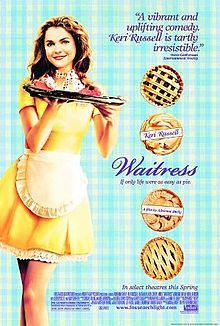

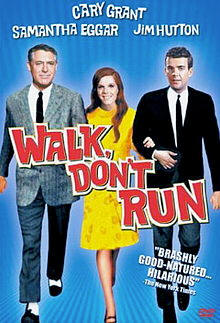
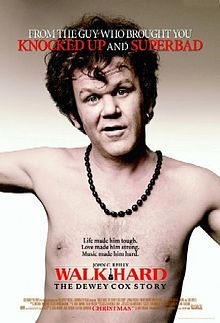
.jpg/220px-Walk_on_Water_(2004_film).jpg)

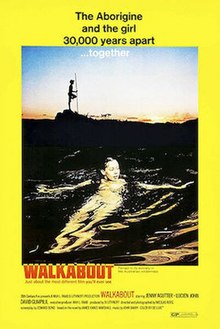
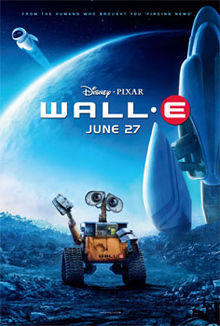

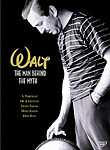
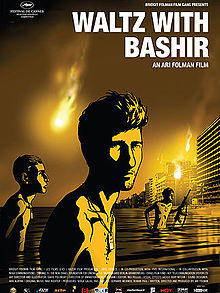
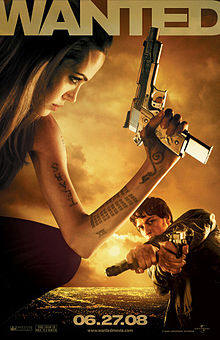

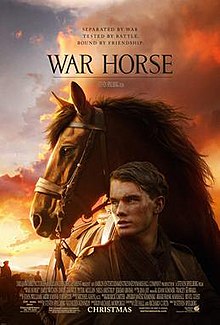

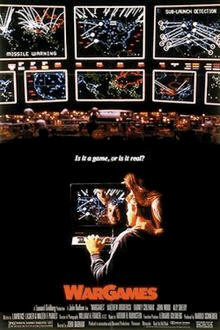

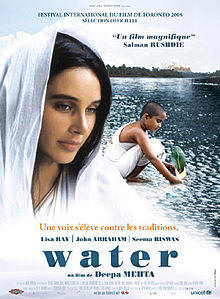
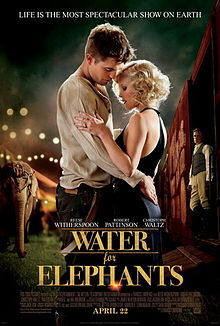
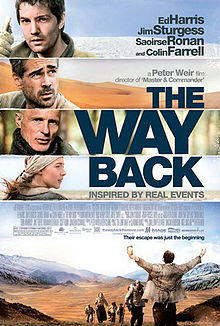
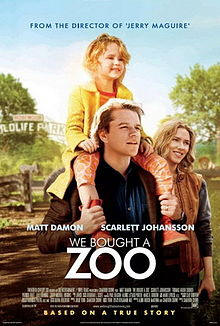

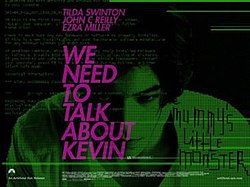
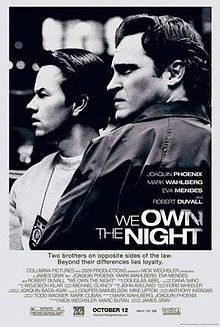


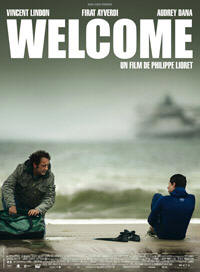
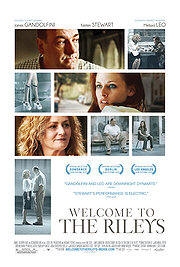
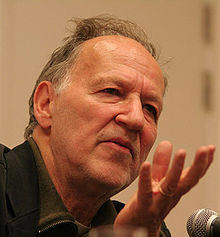
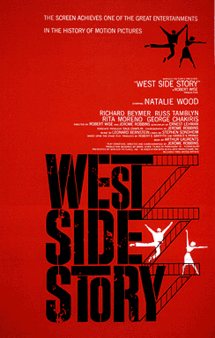

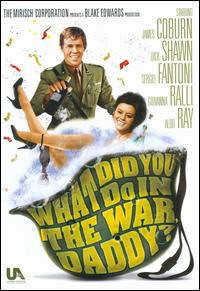


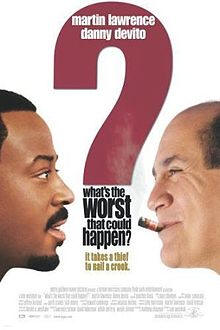
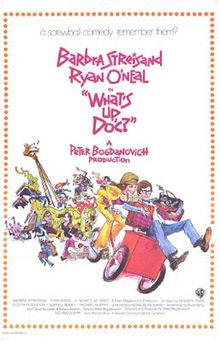

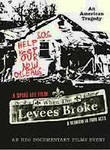
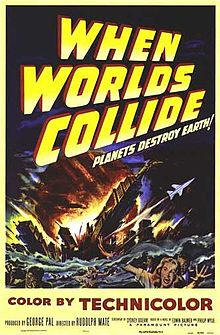

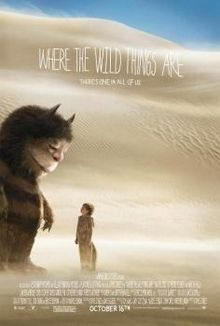
_poster.jpg/220px-Whip_It_(2009_film)_poster.jpg)



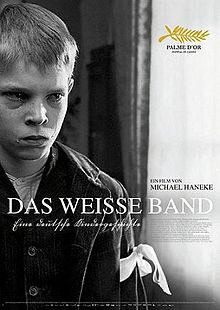
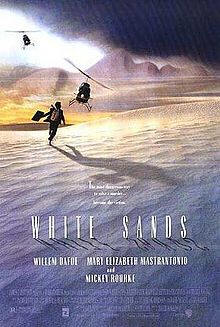
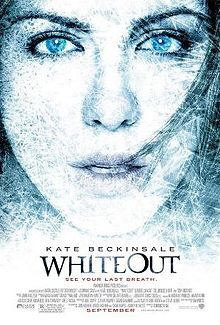
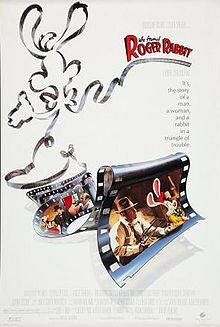
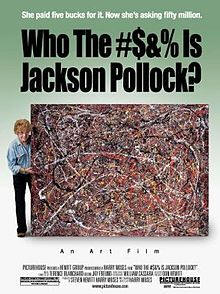
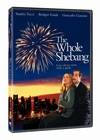

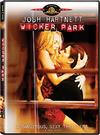



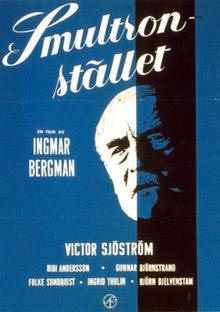
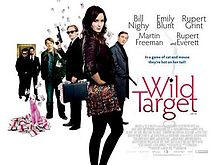
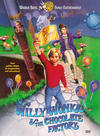
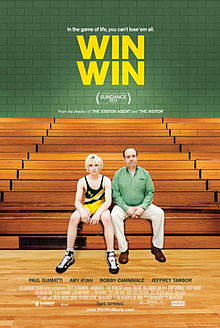

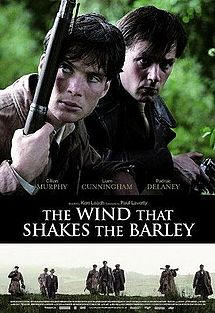

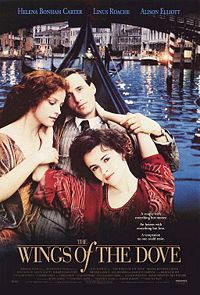

.jpg/220px-Winter_in_Wartime_(film).jpg)
